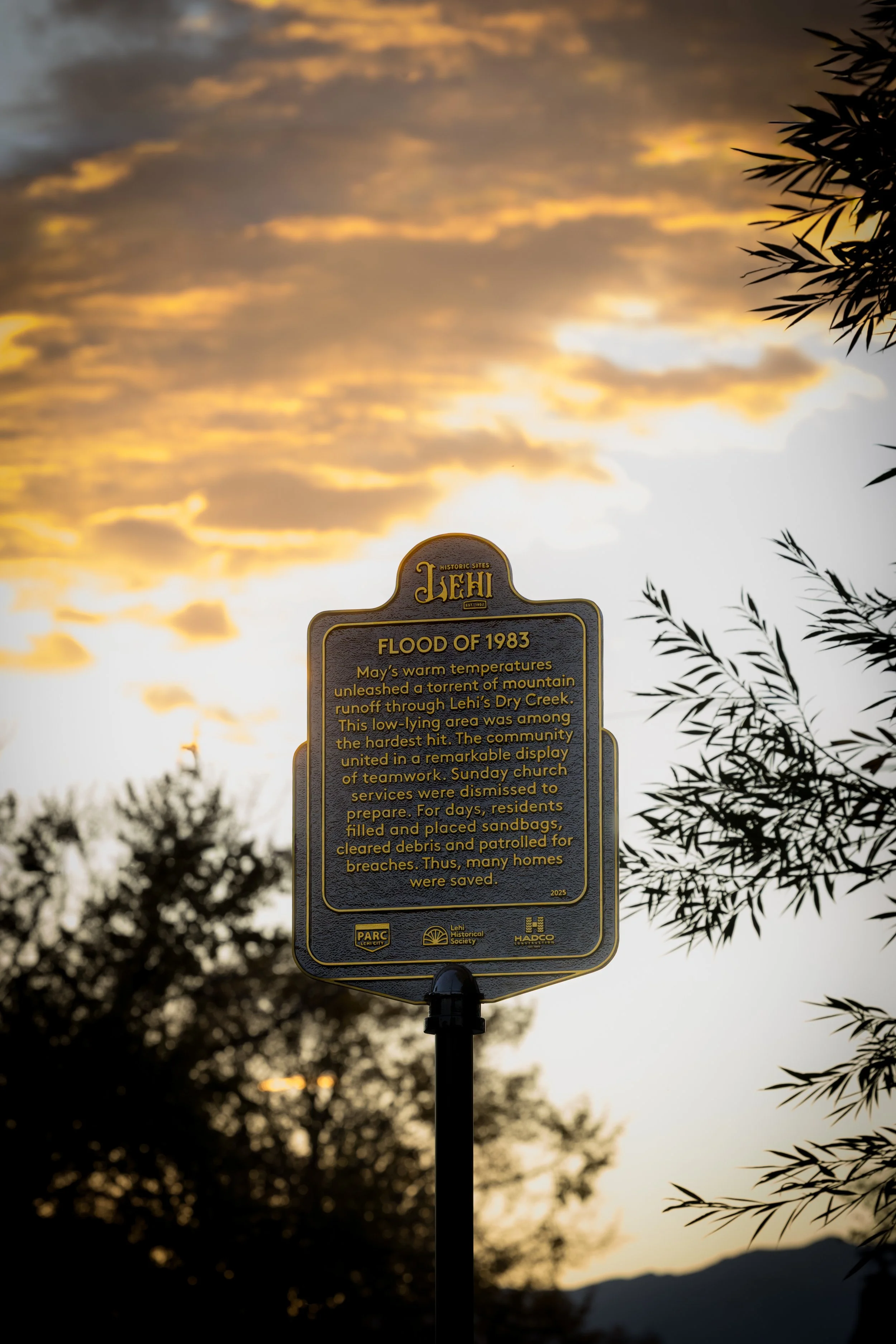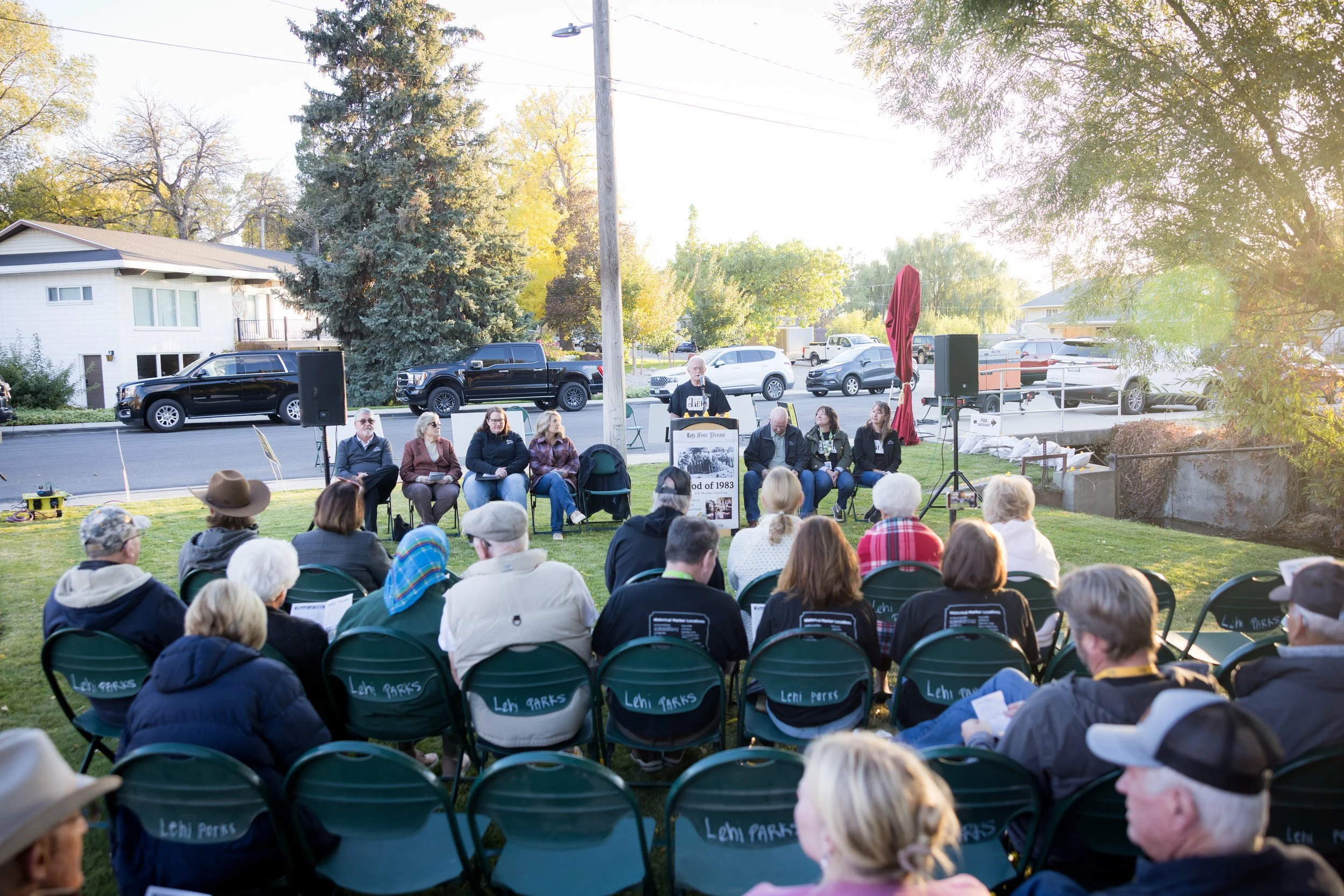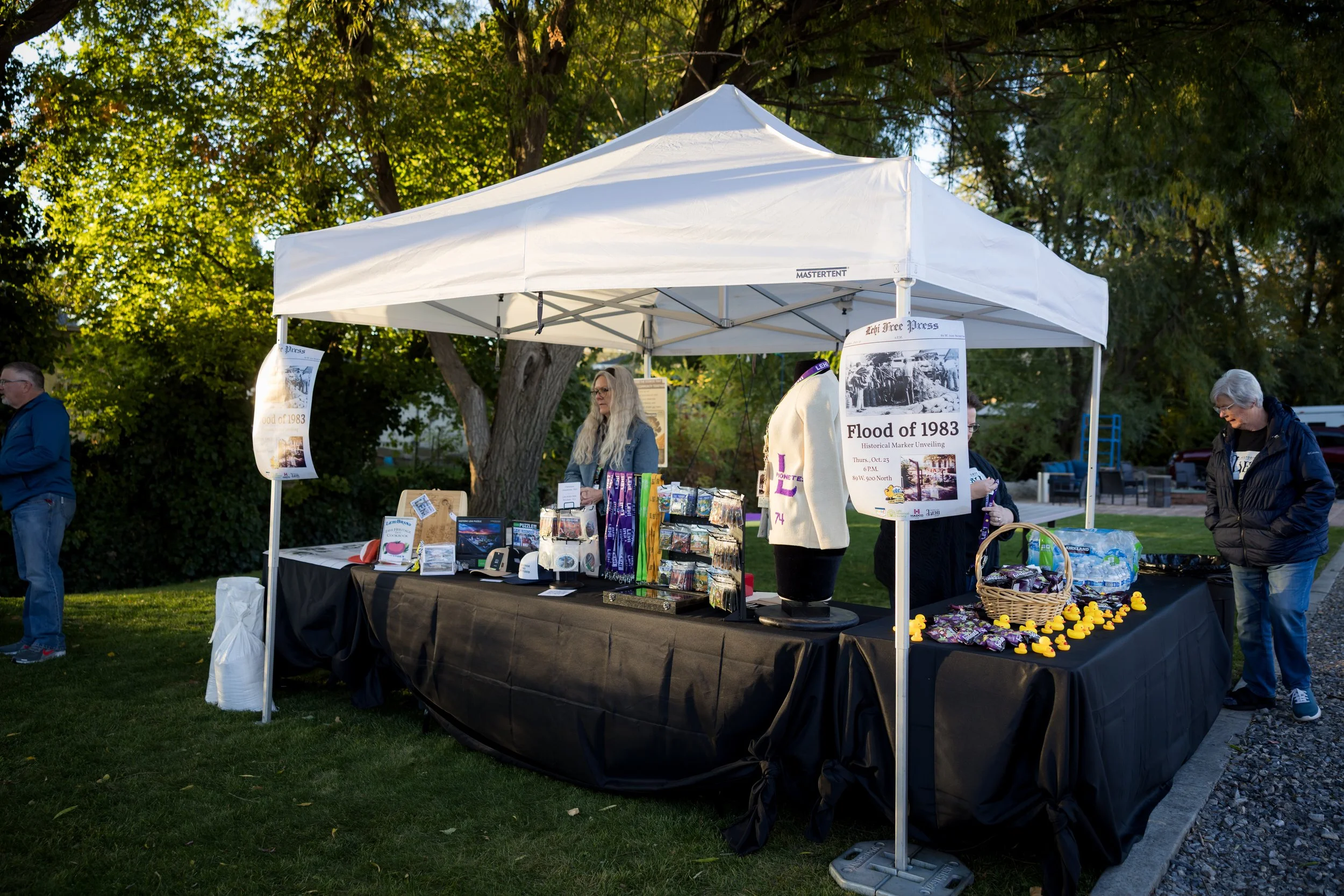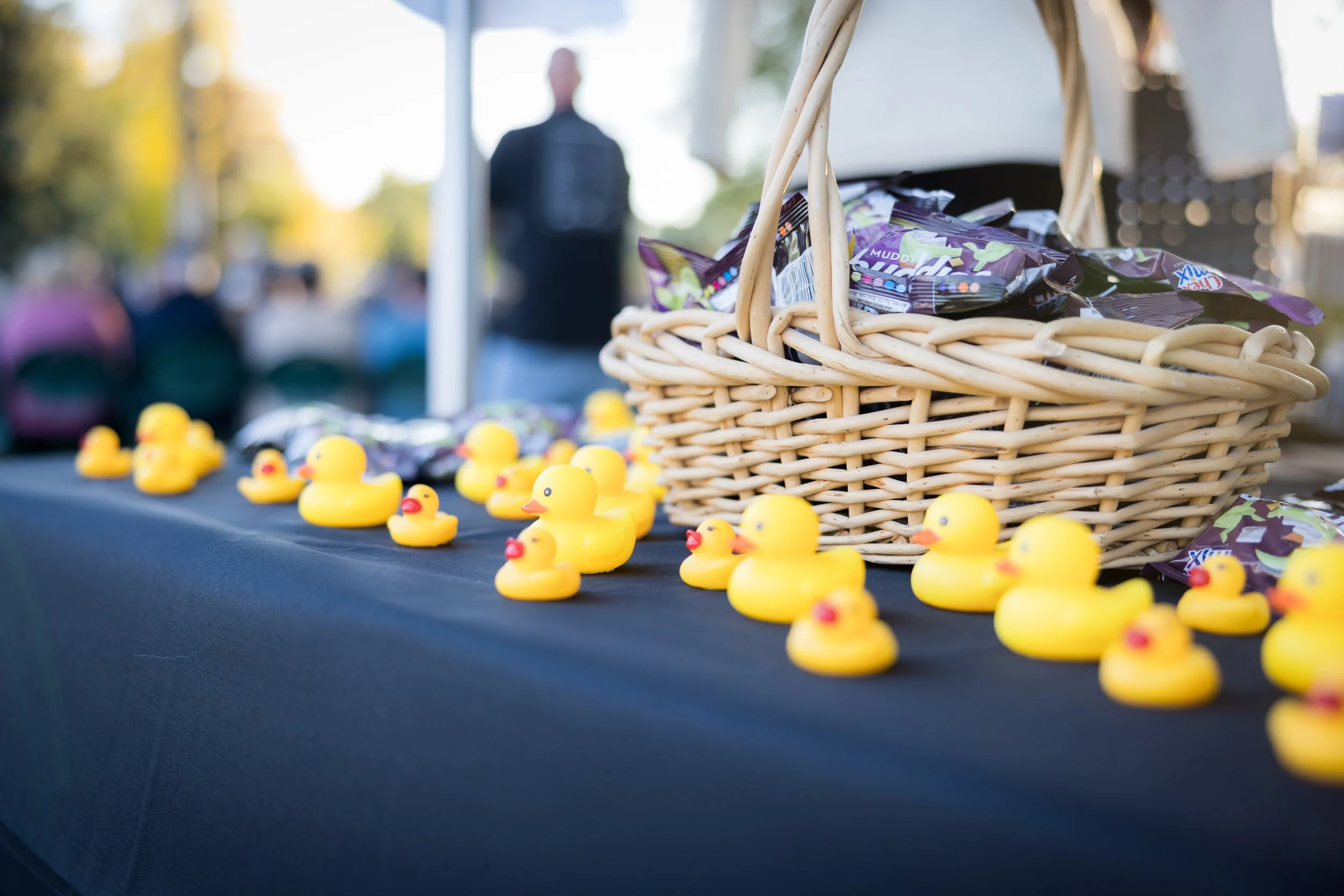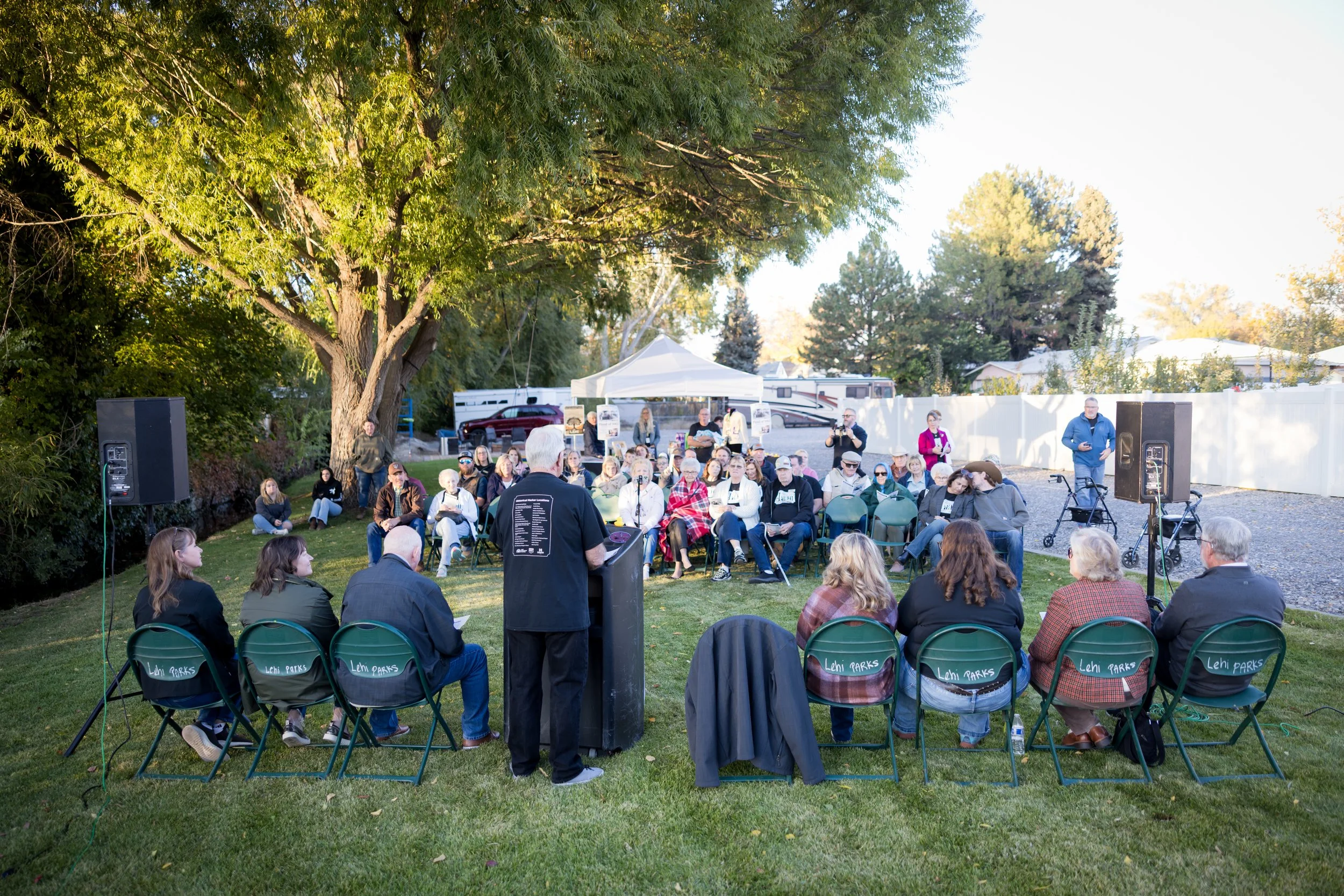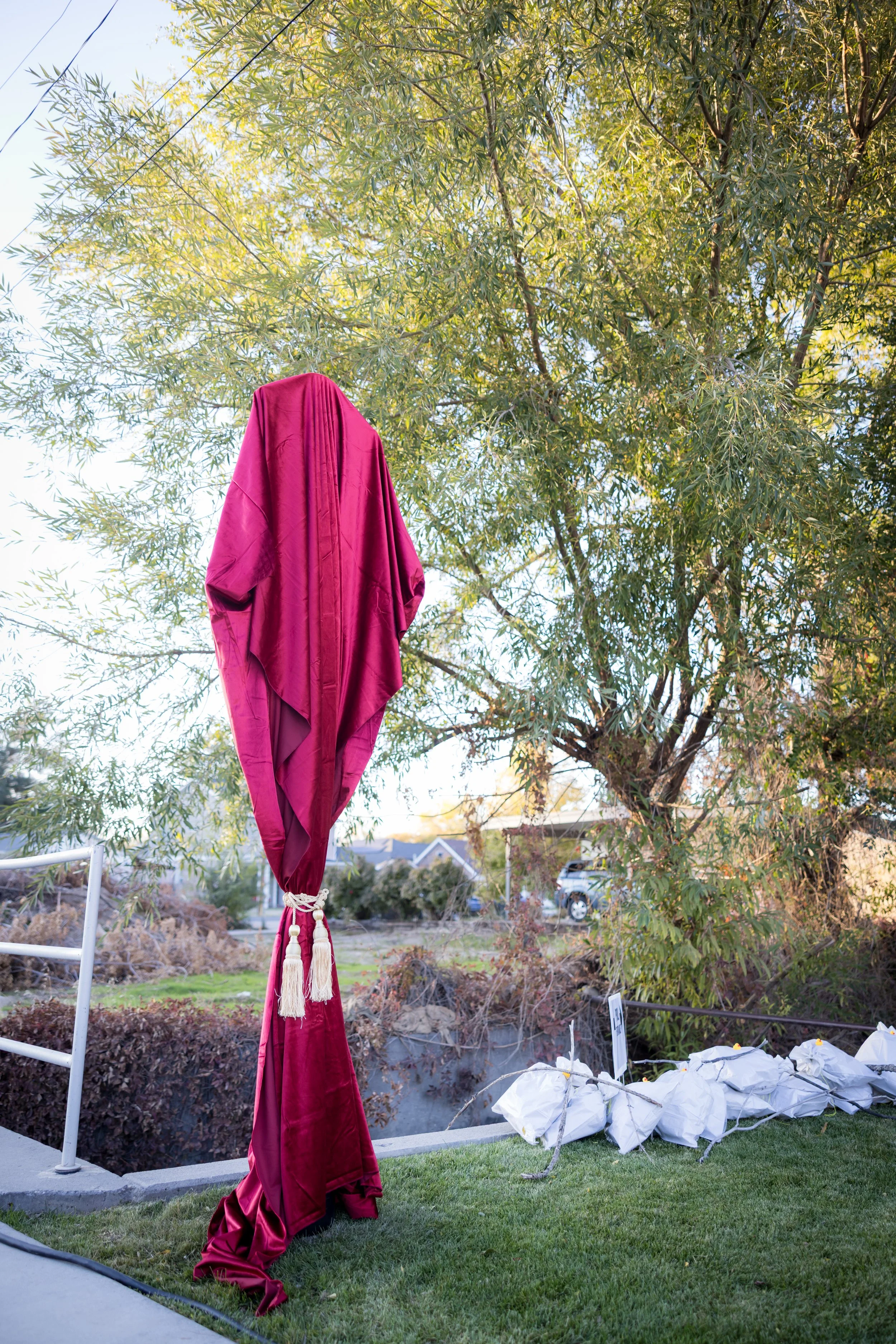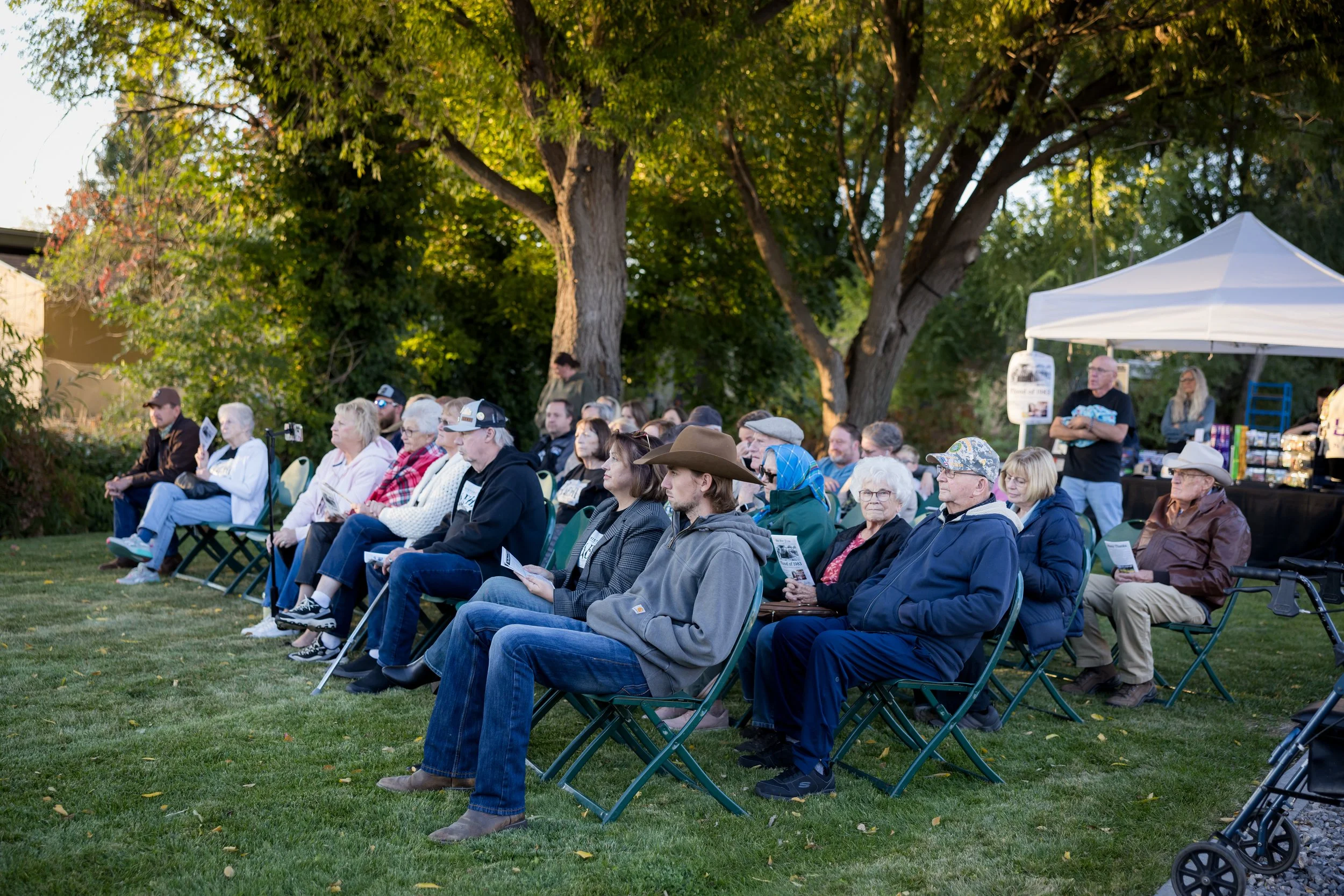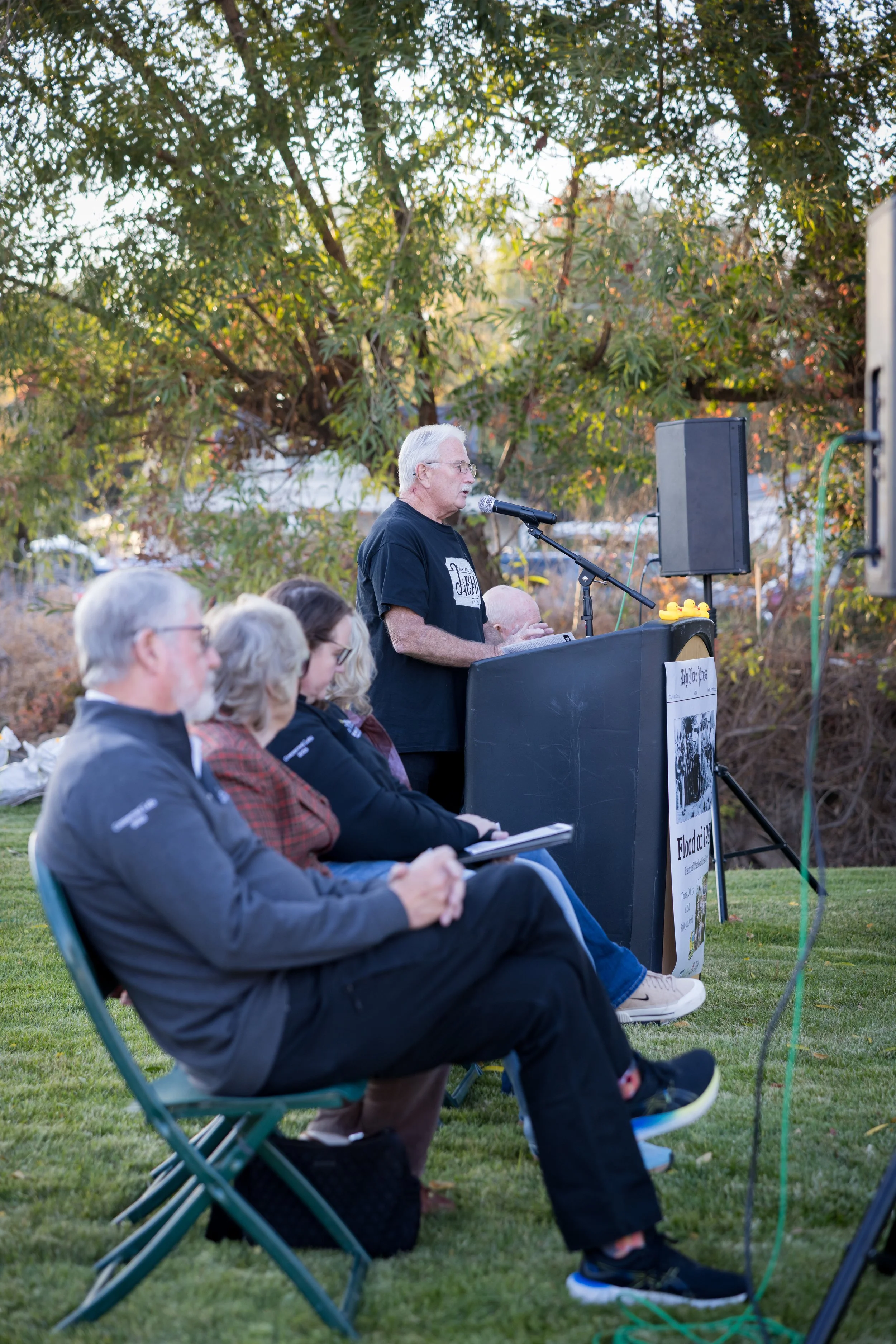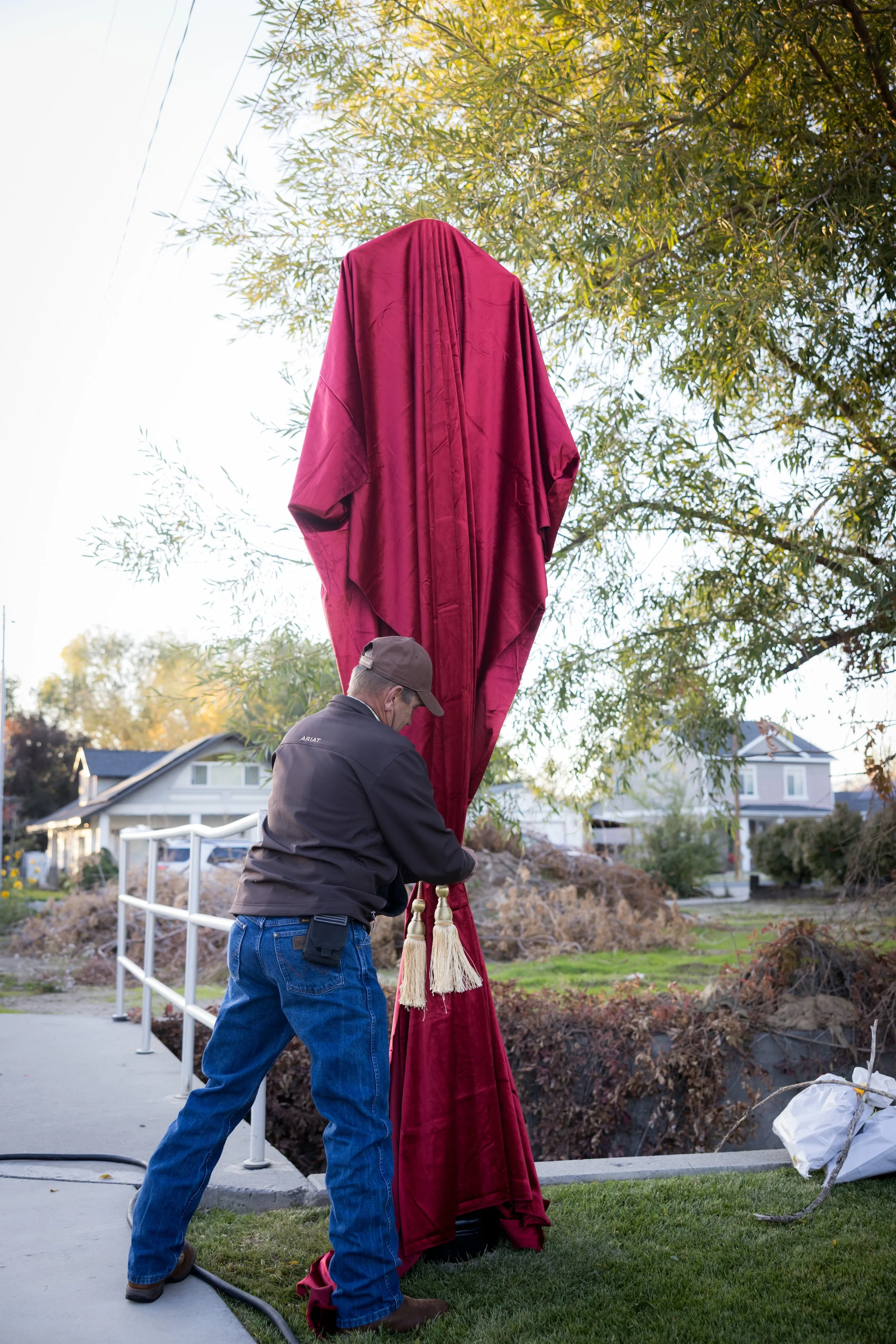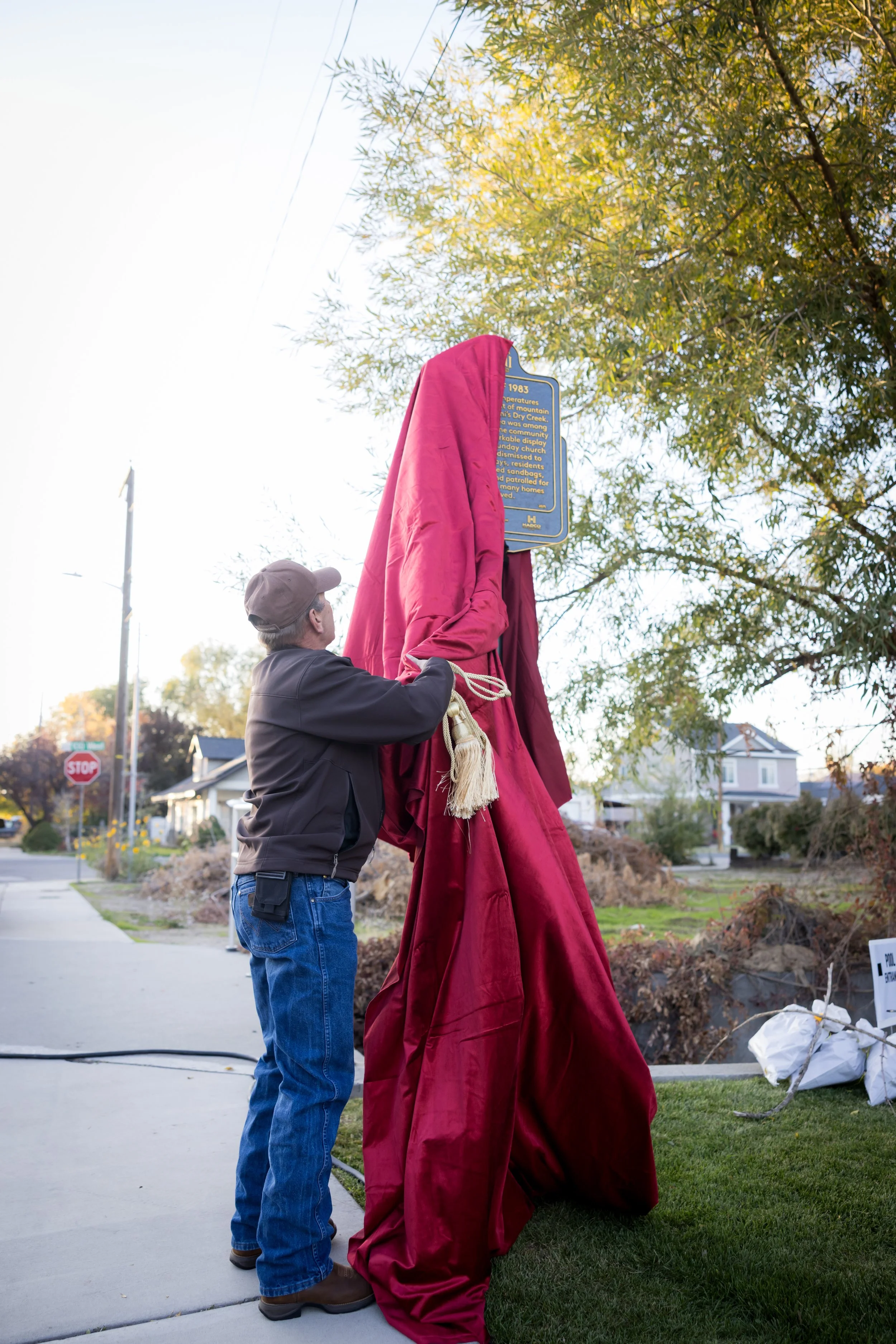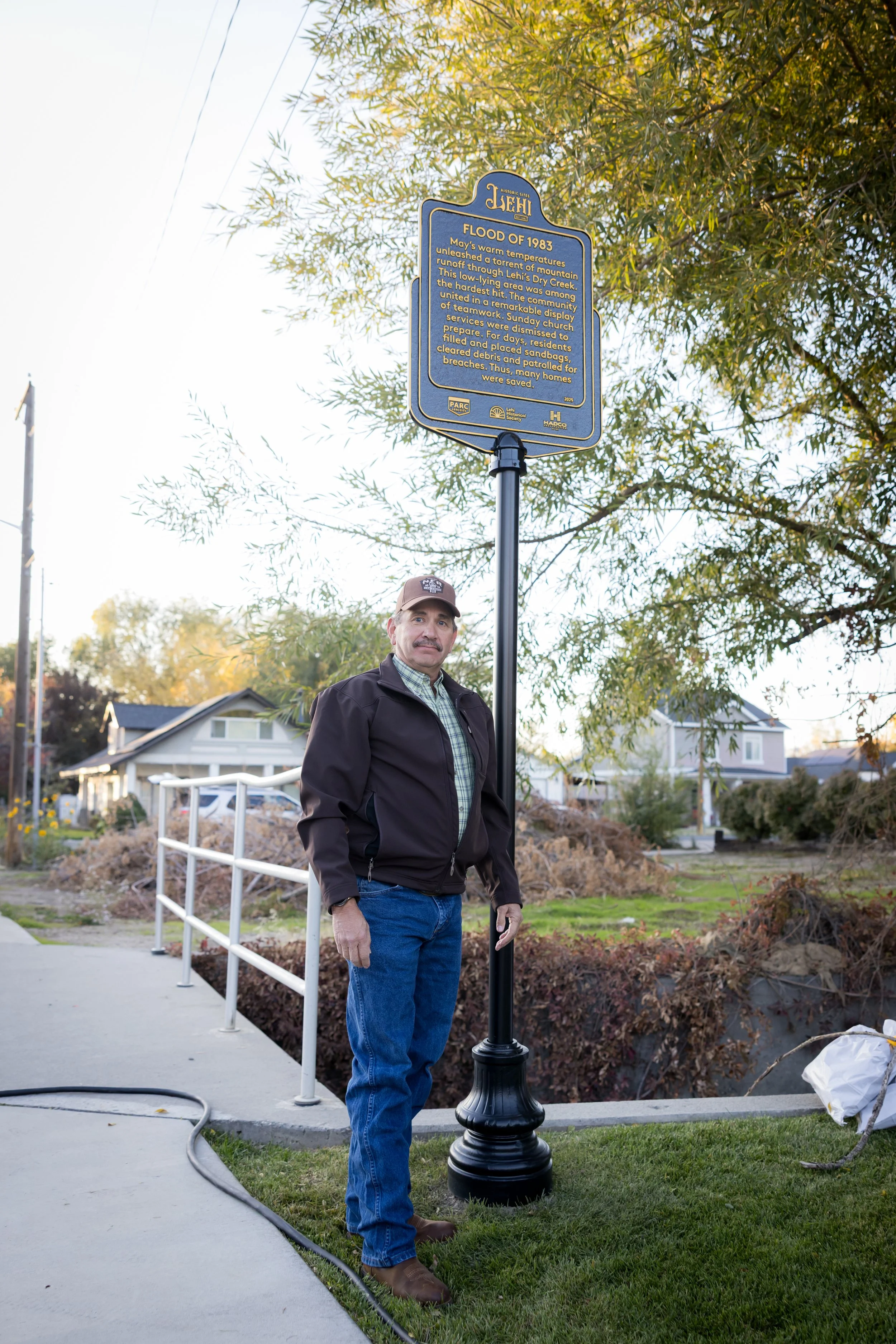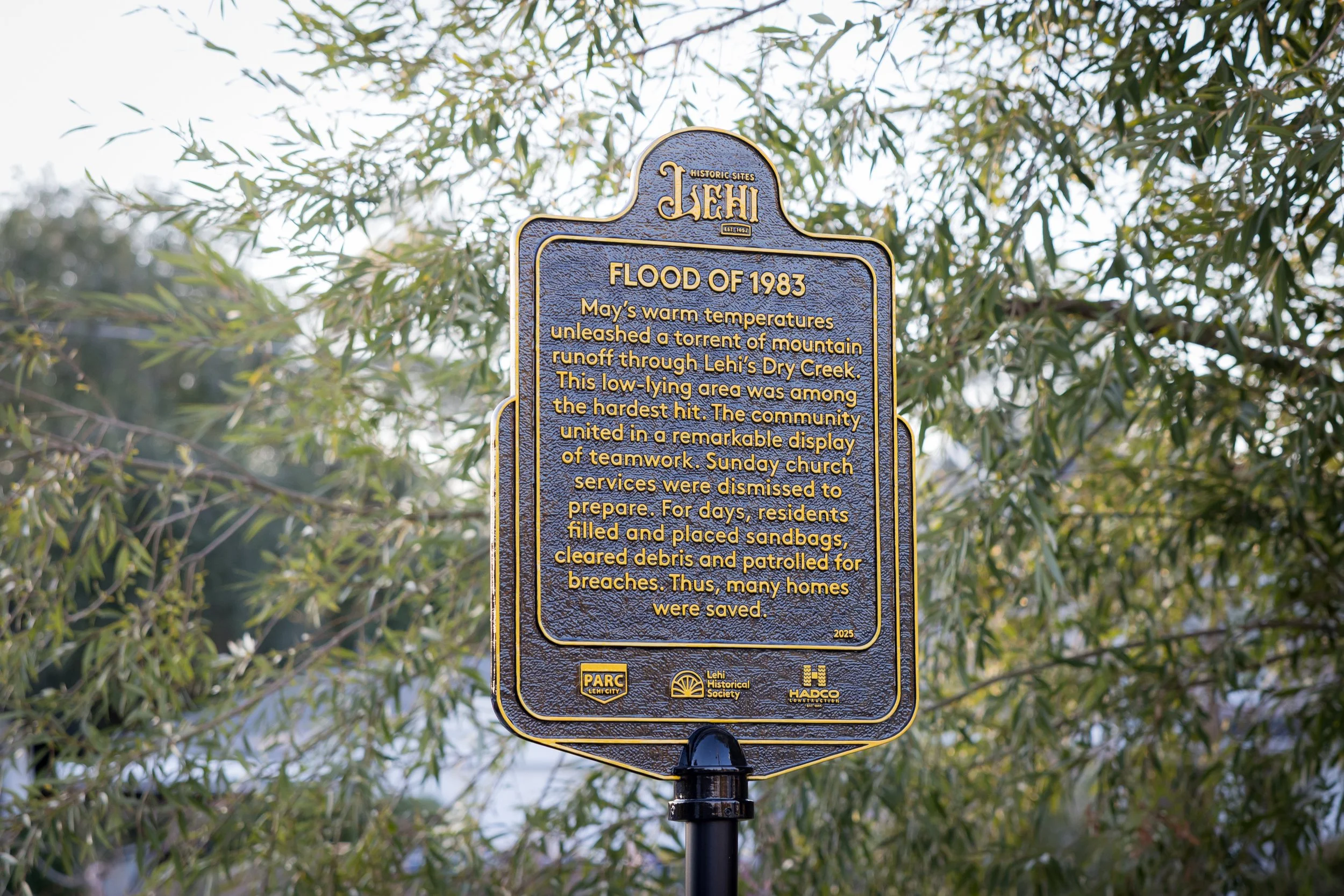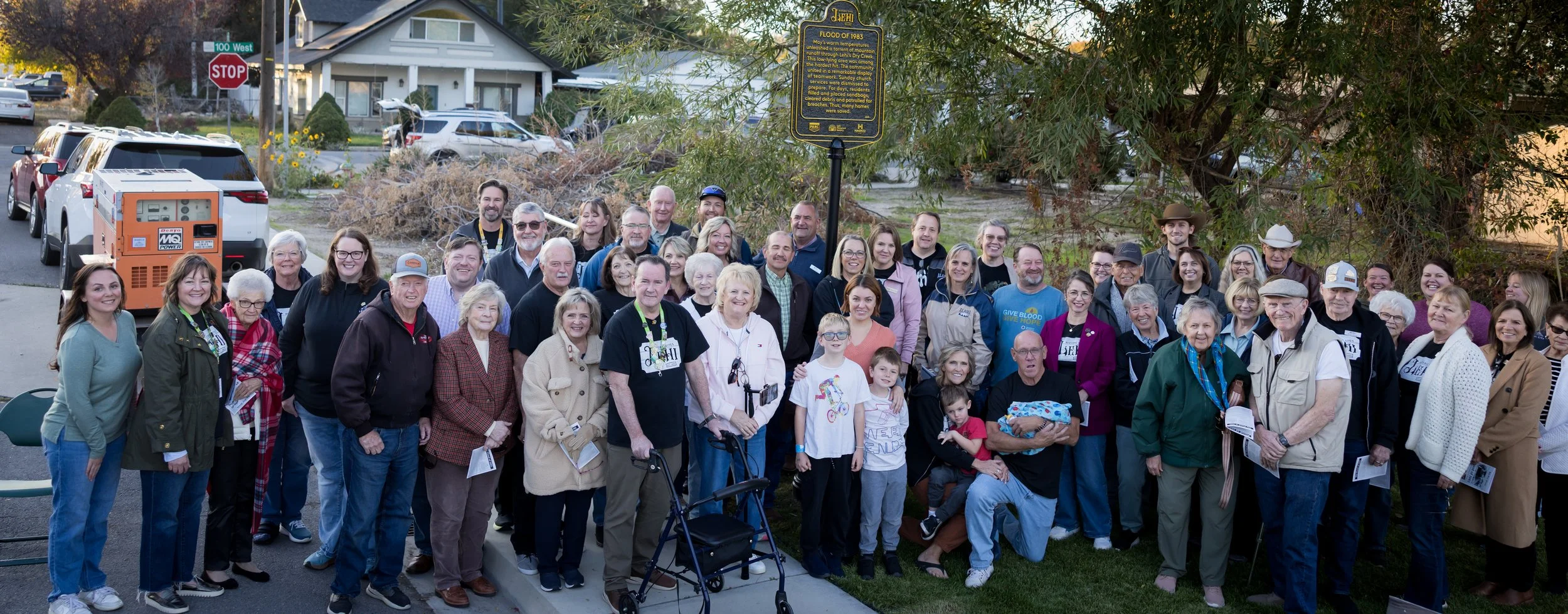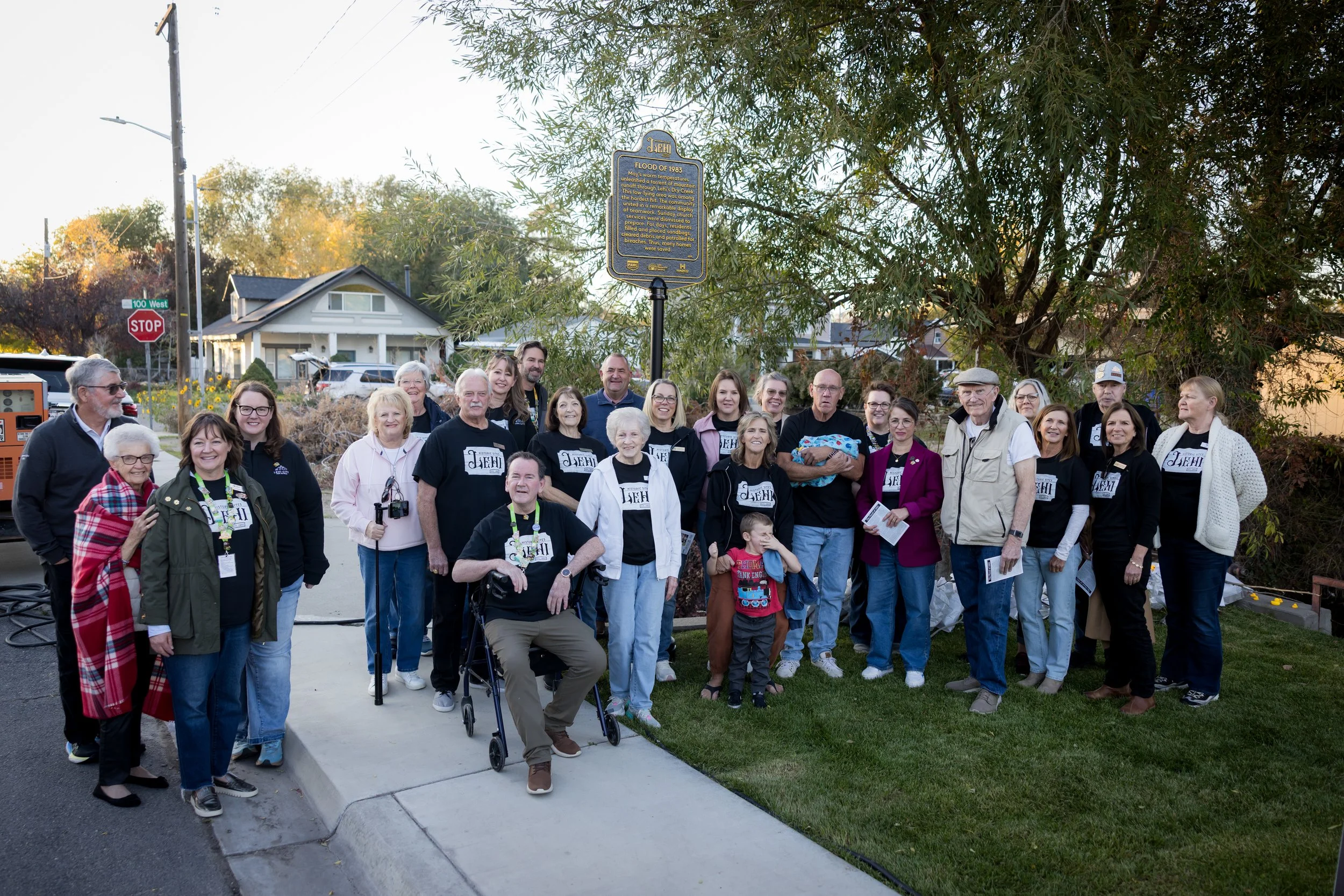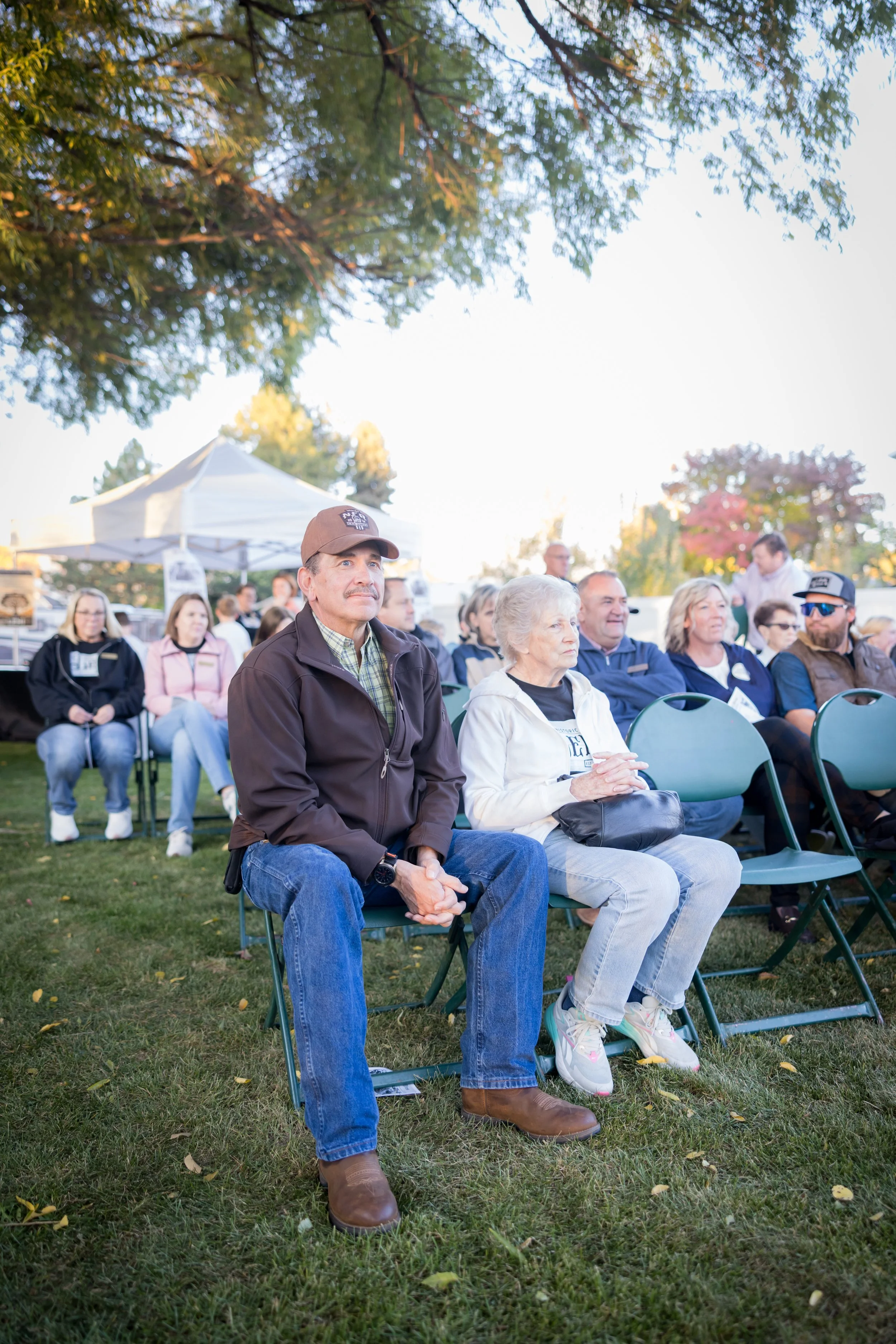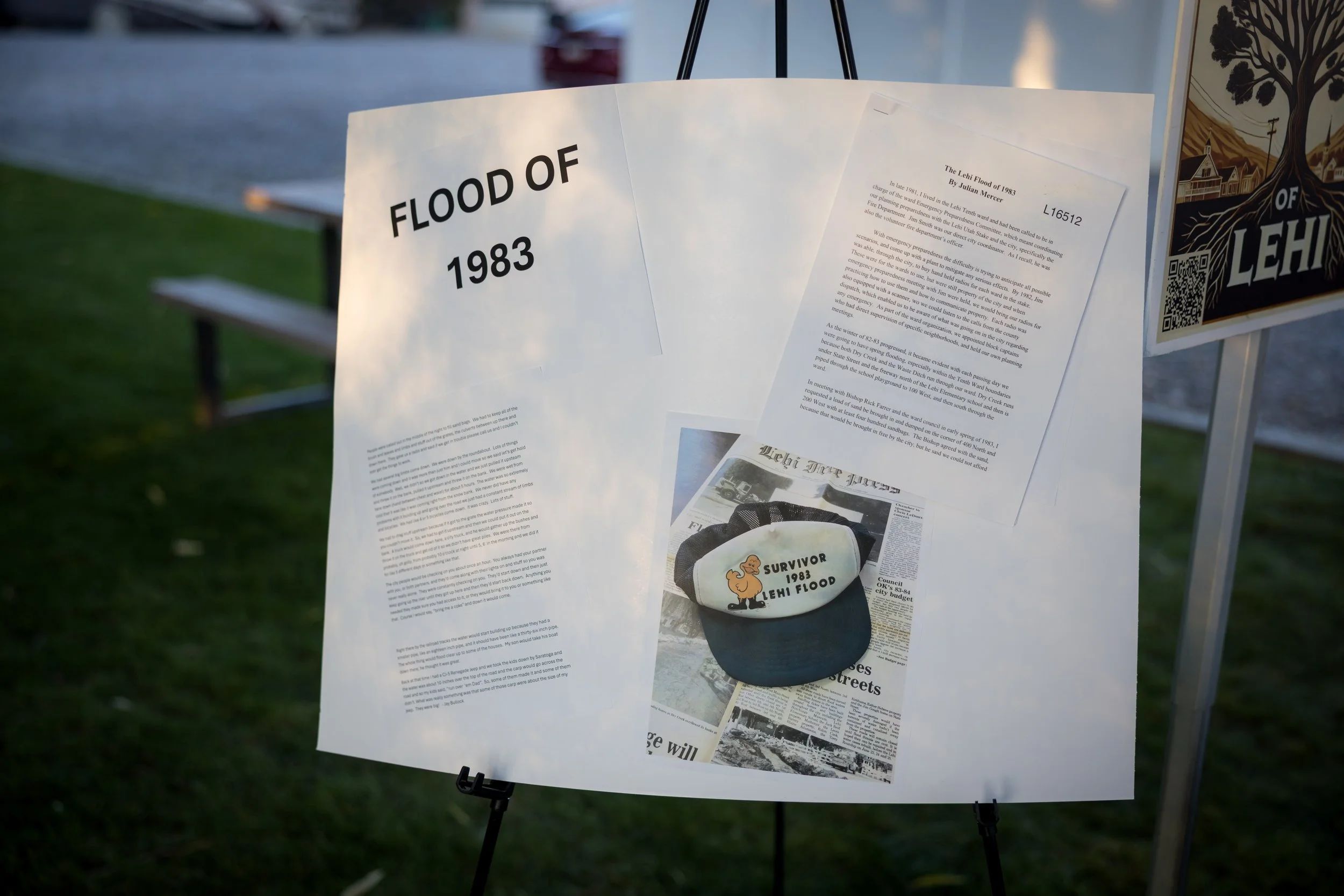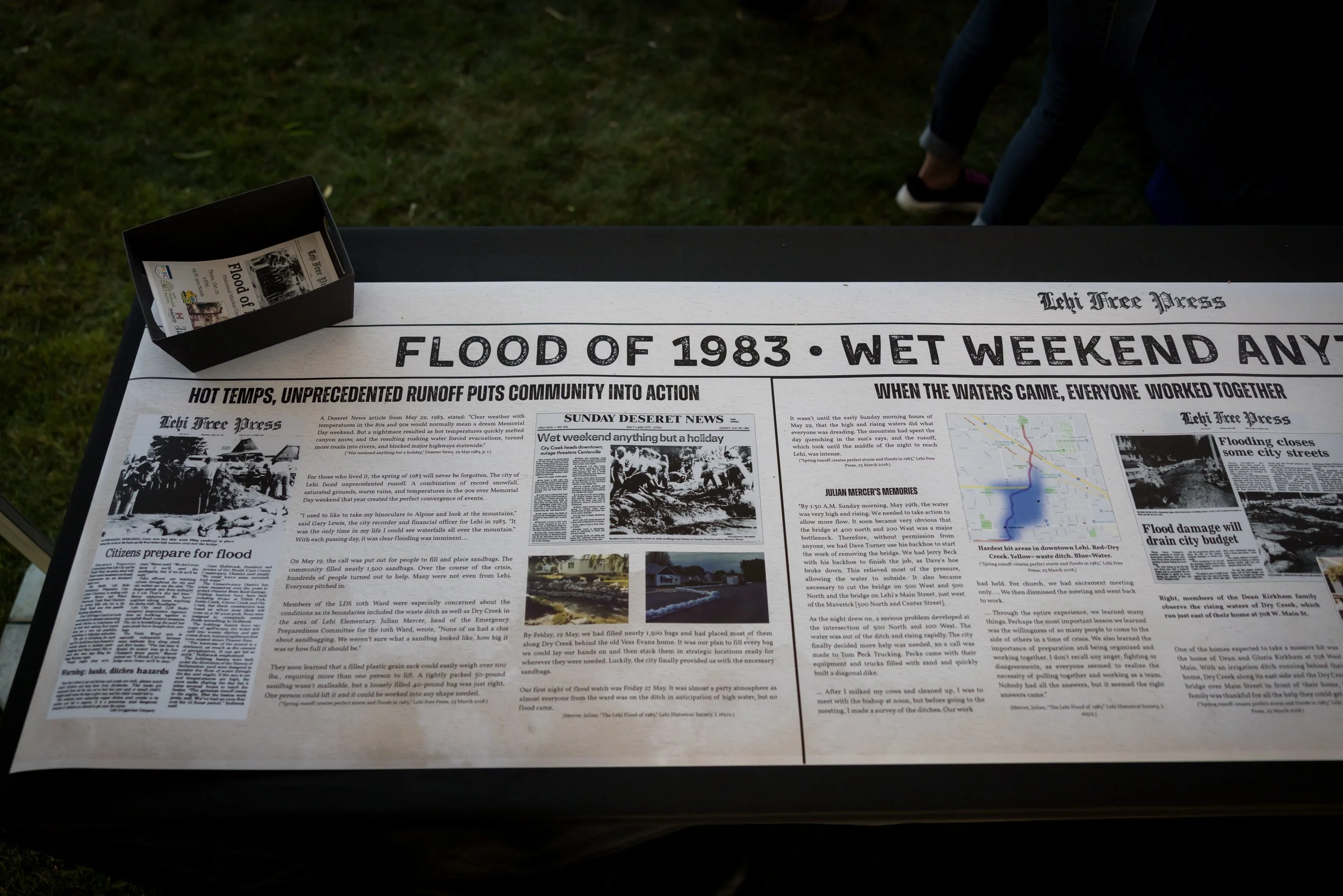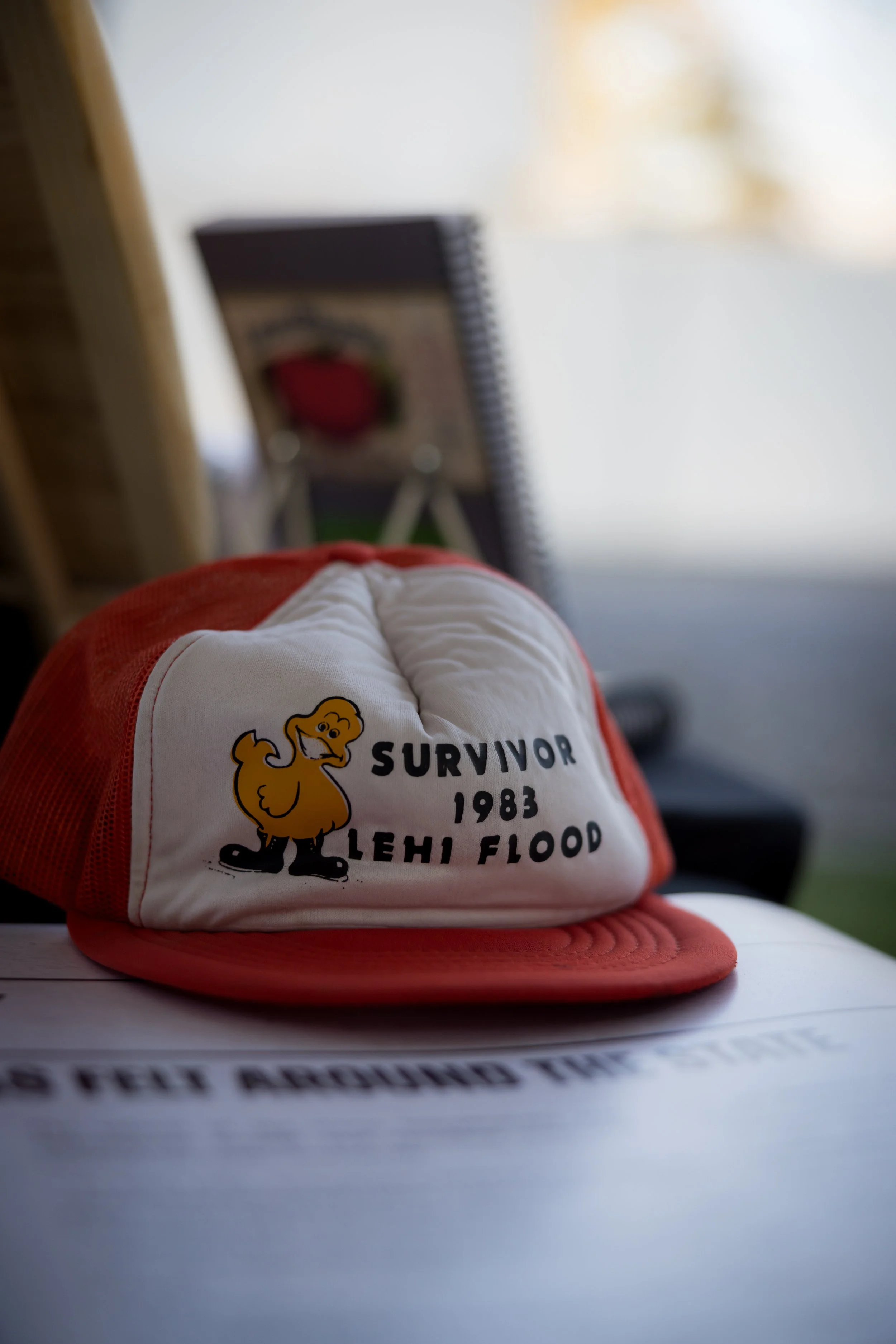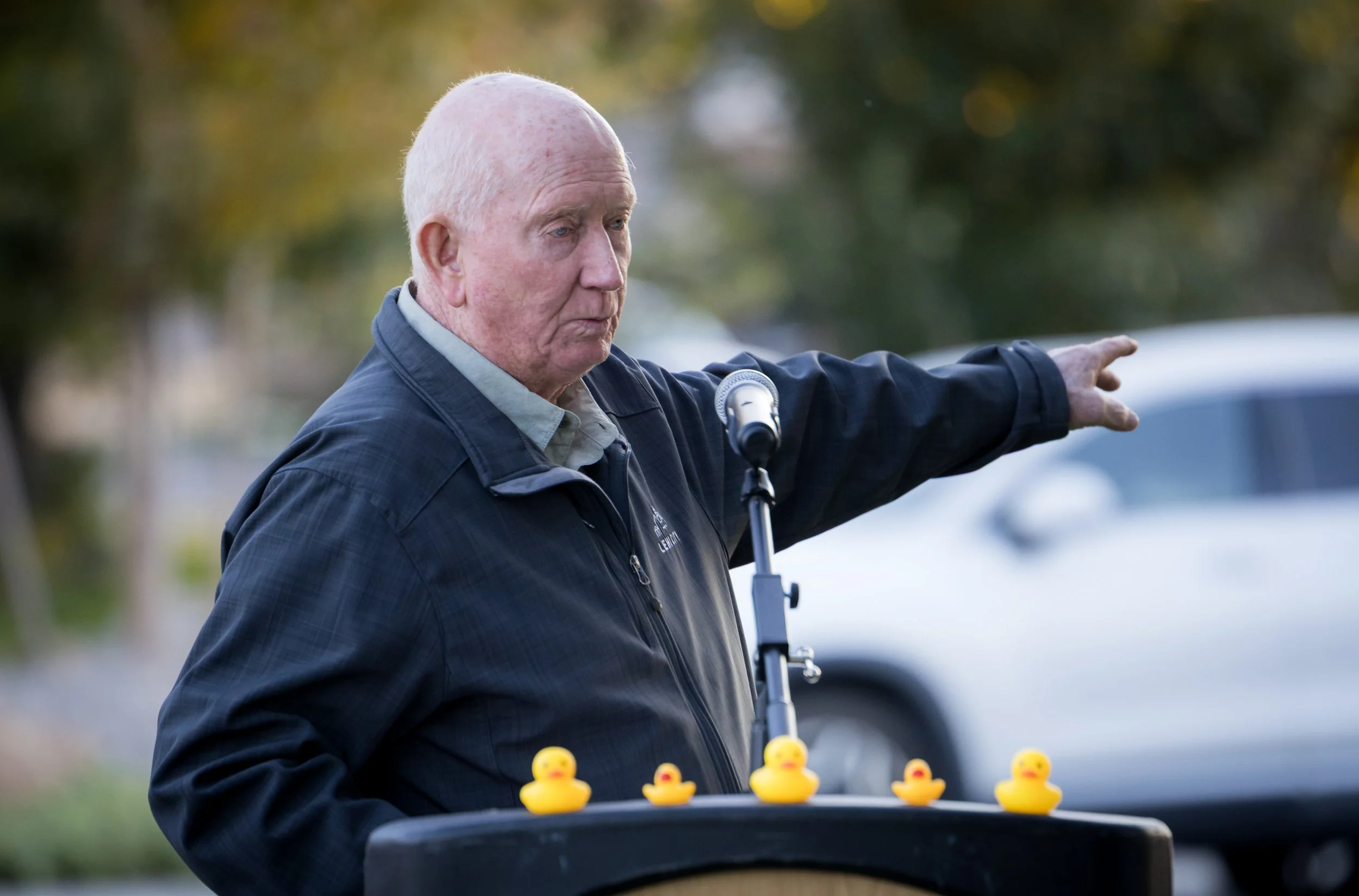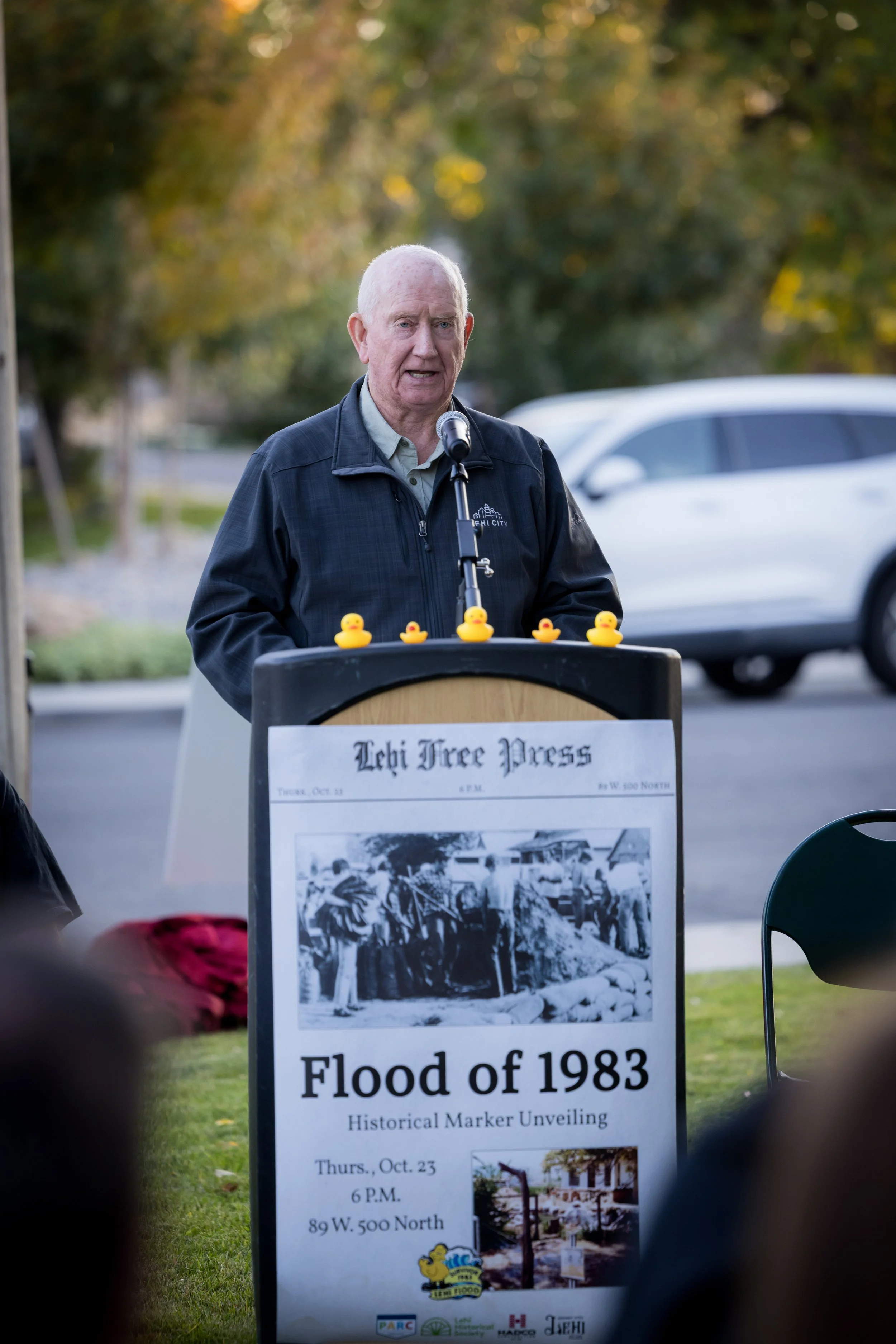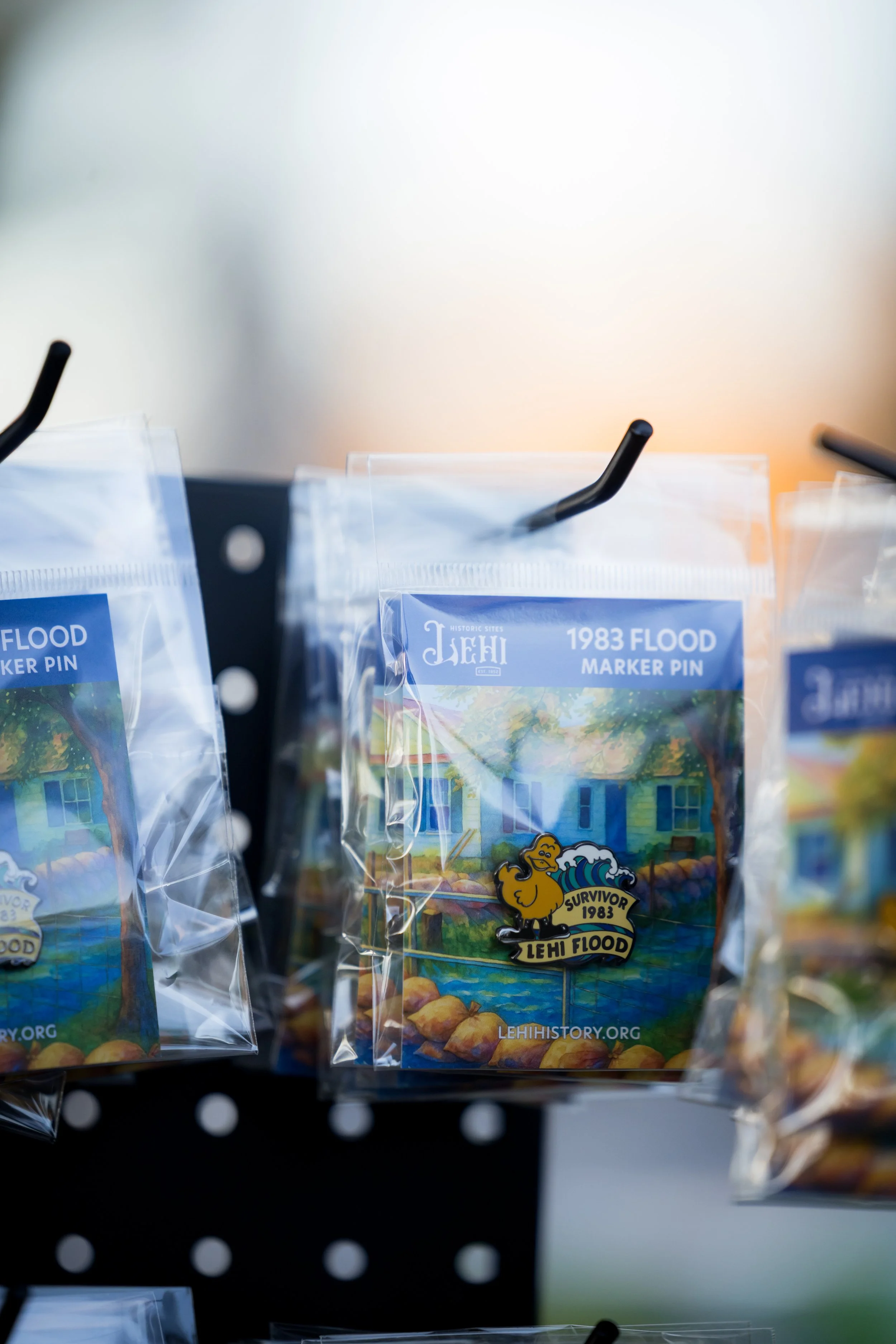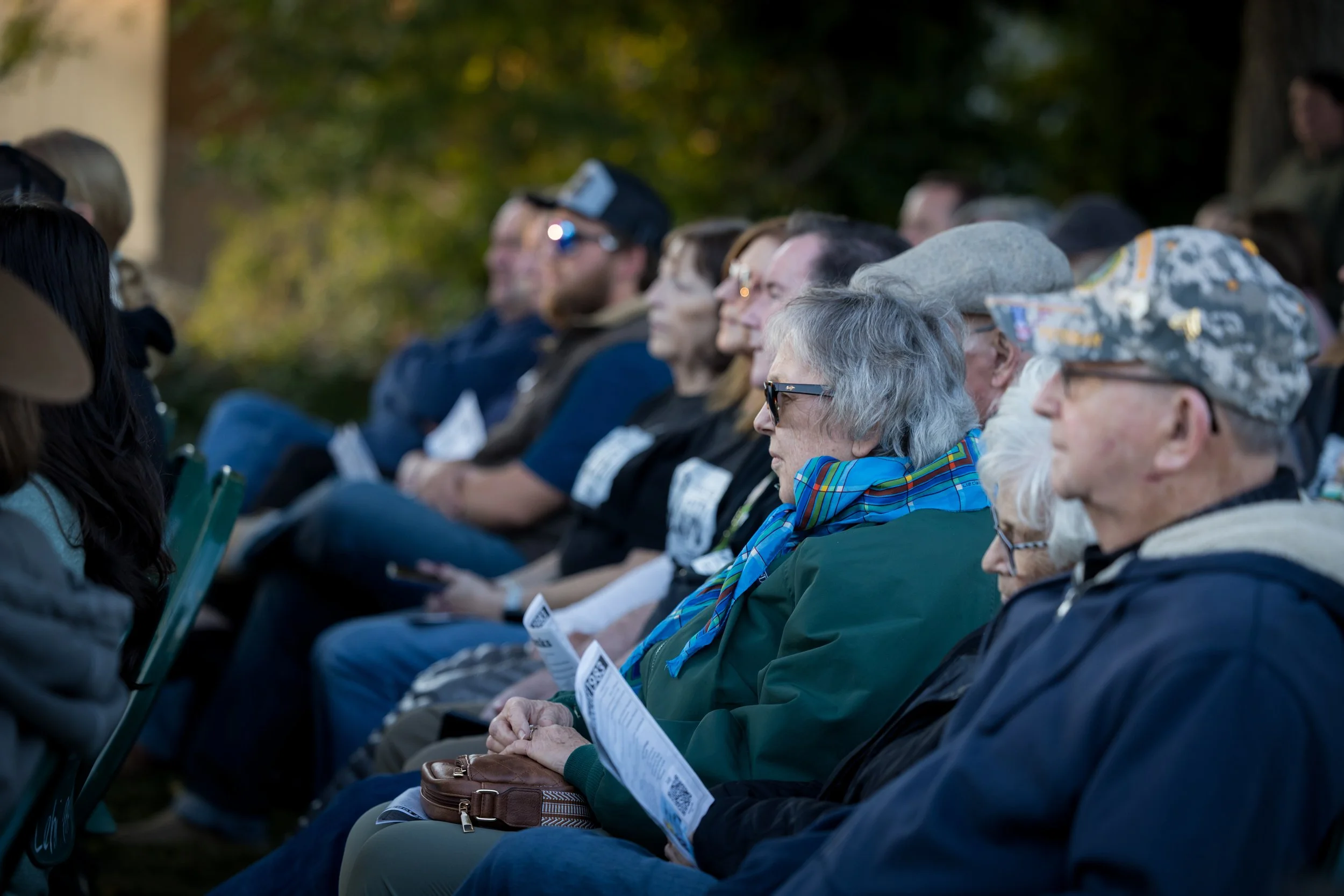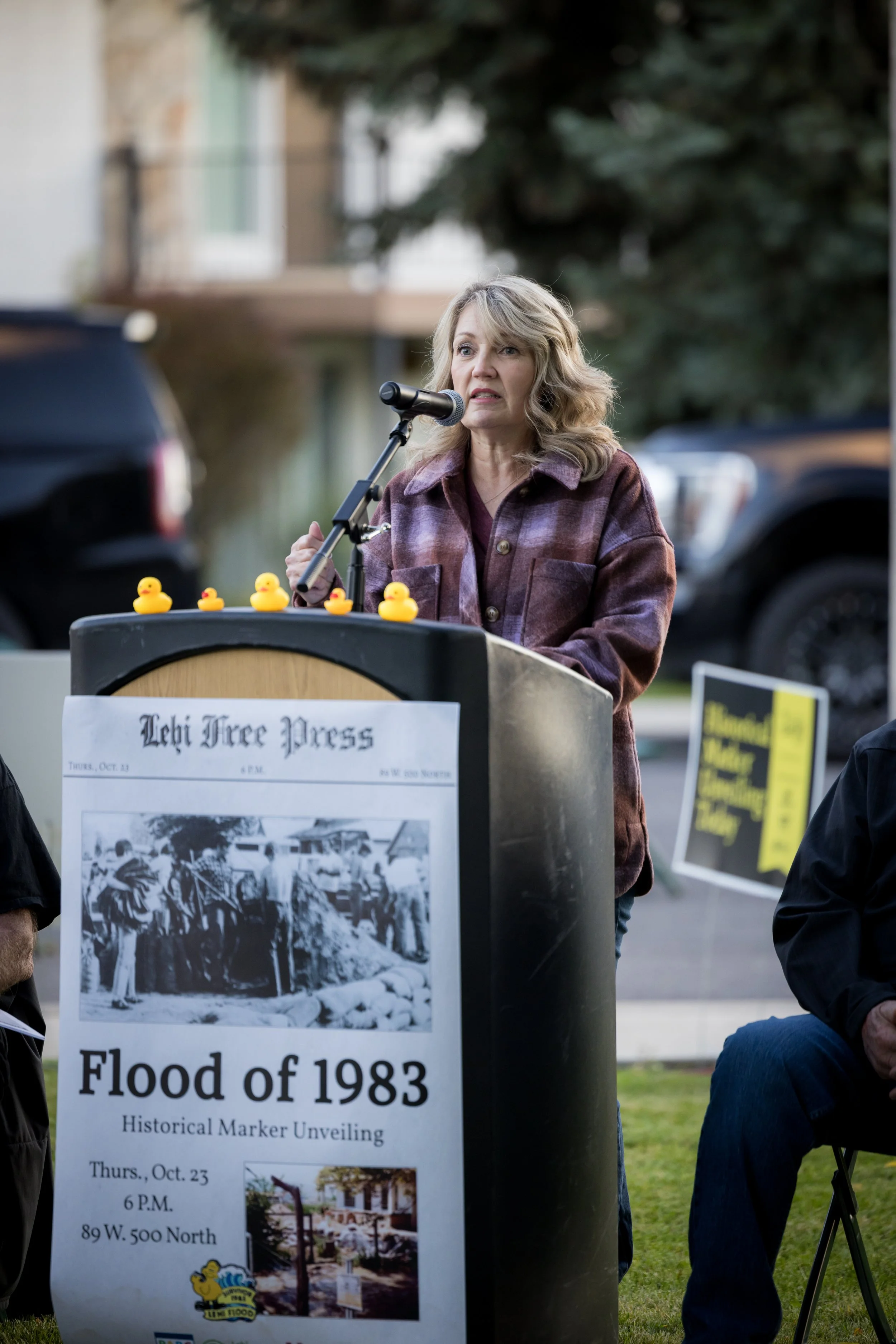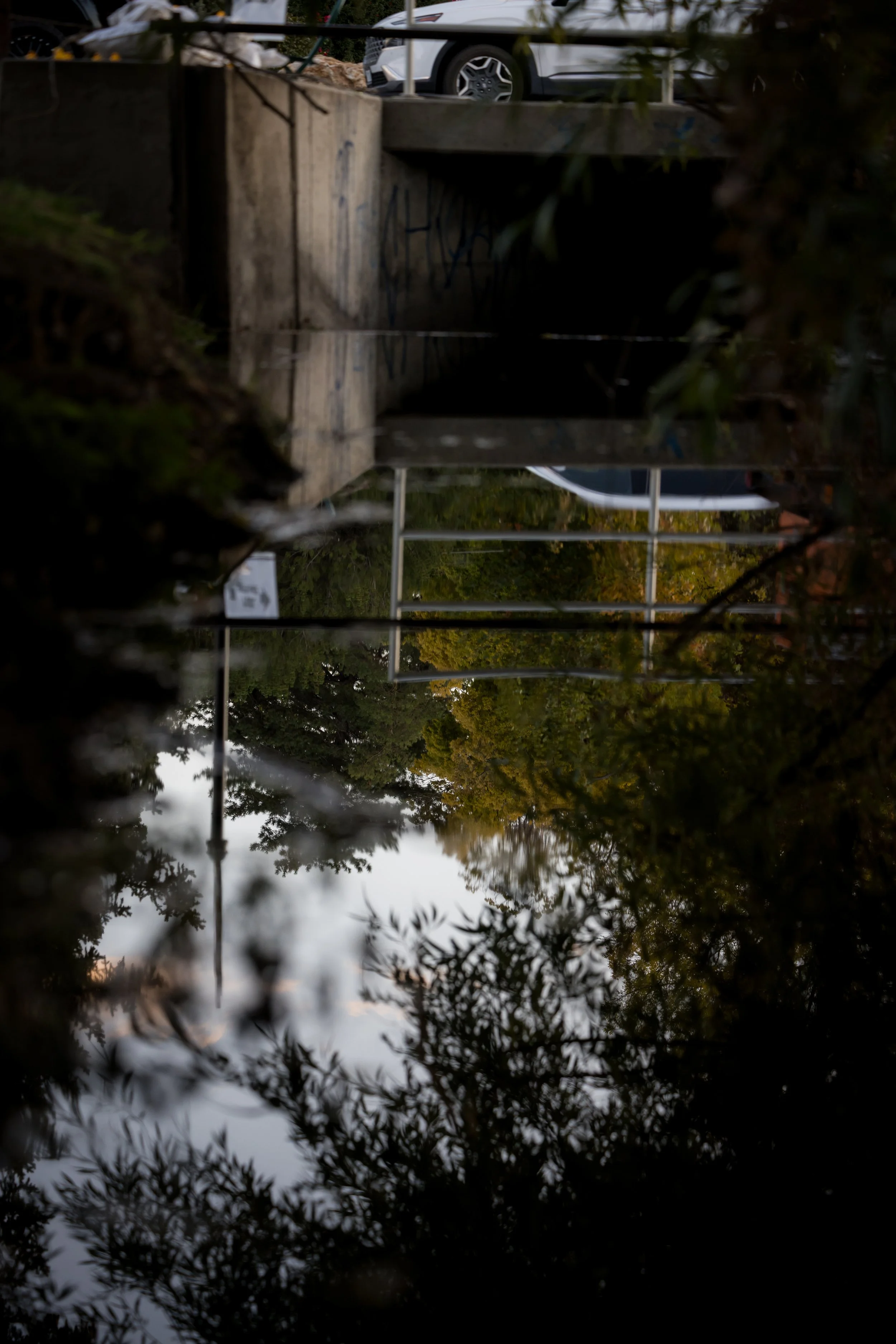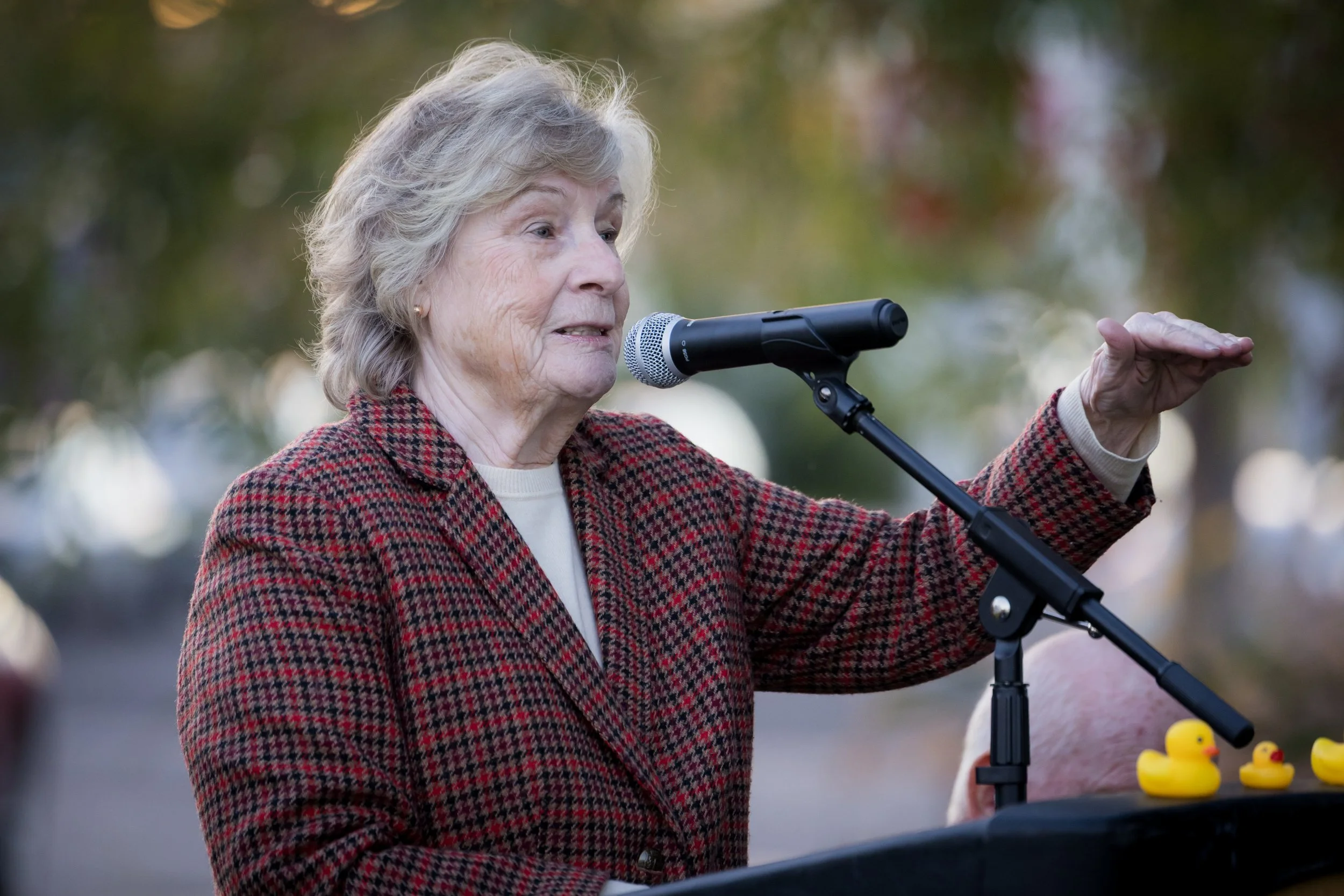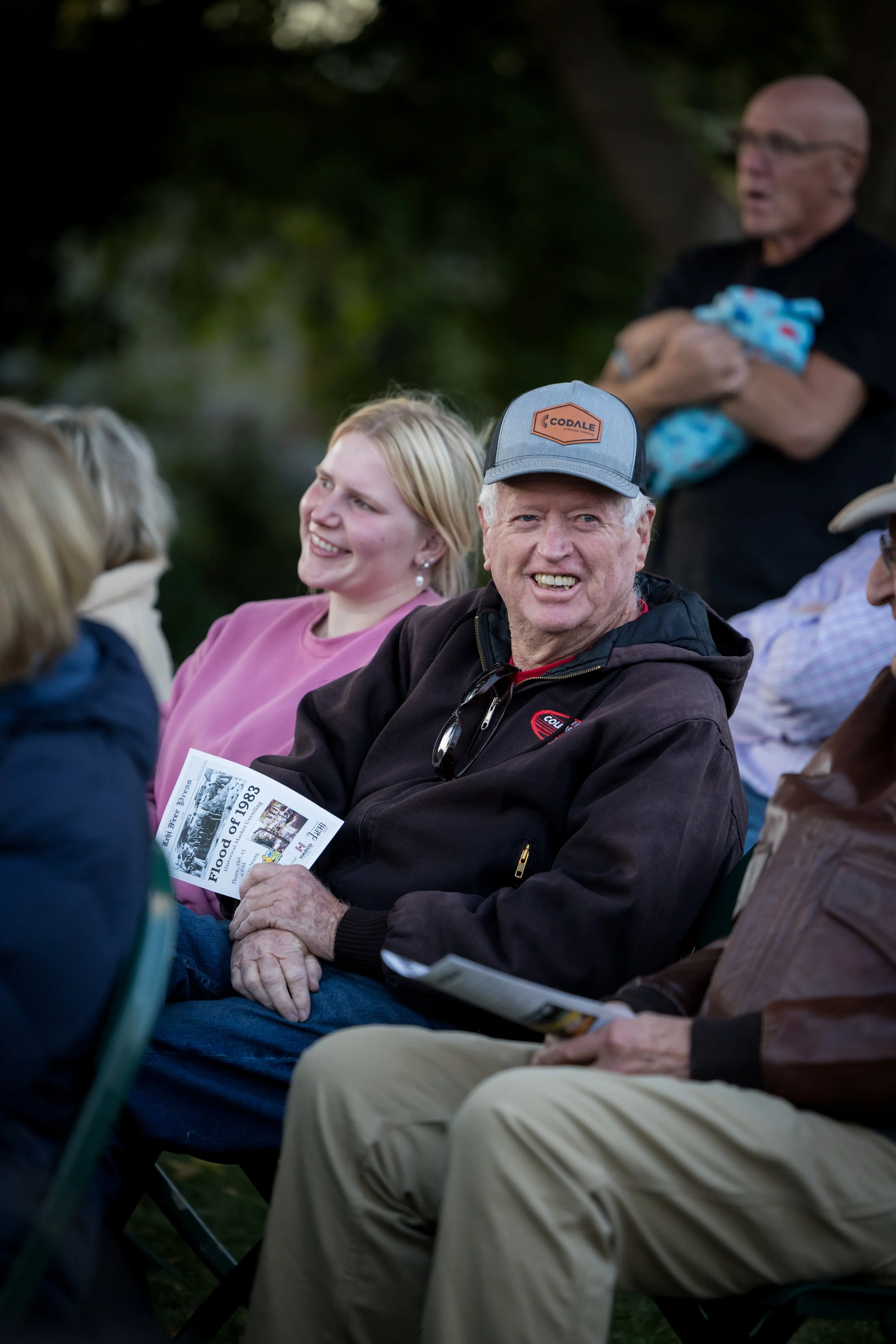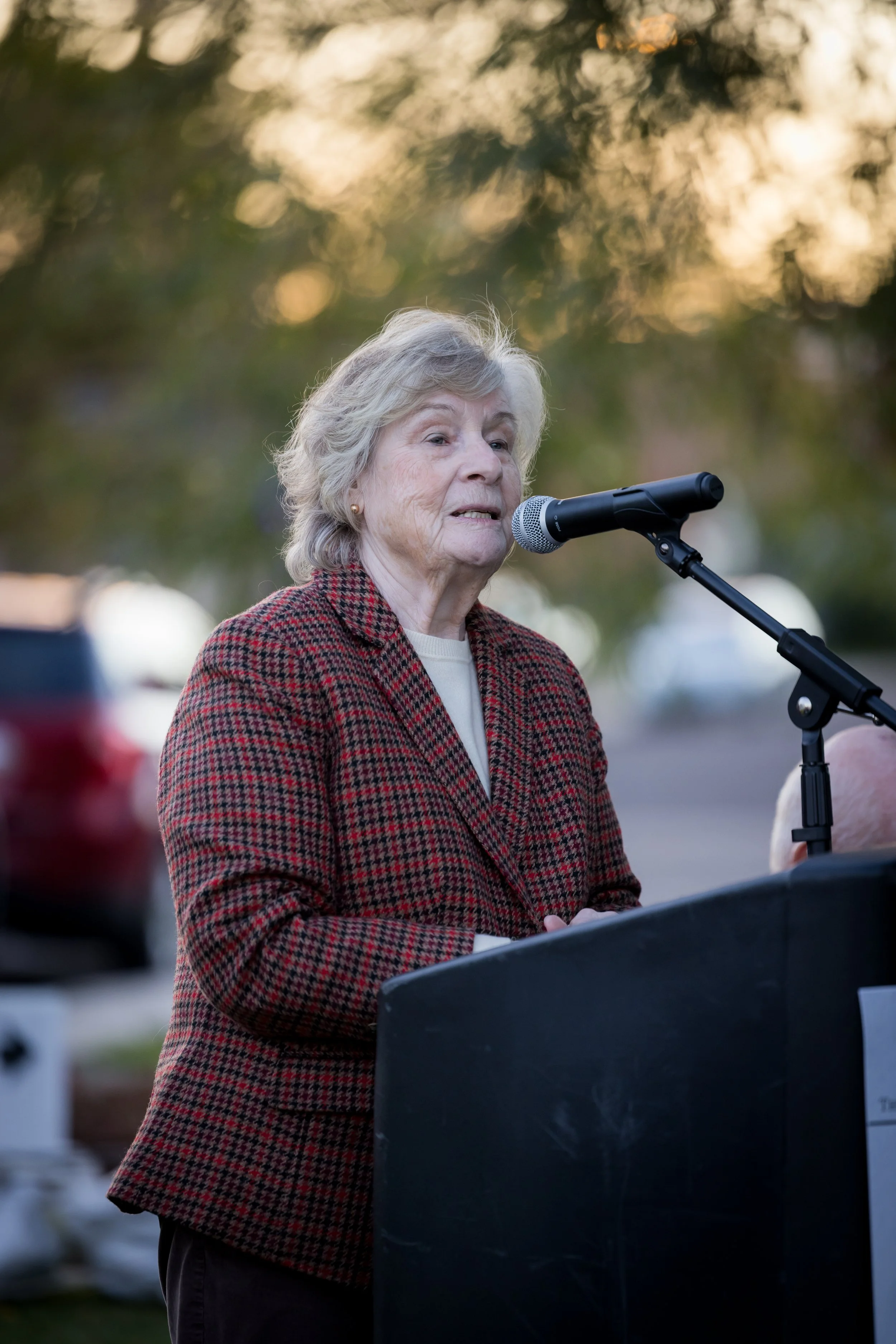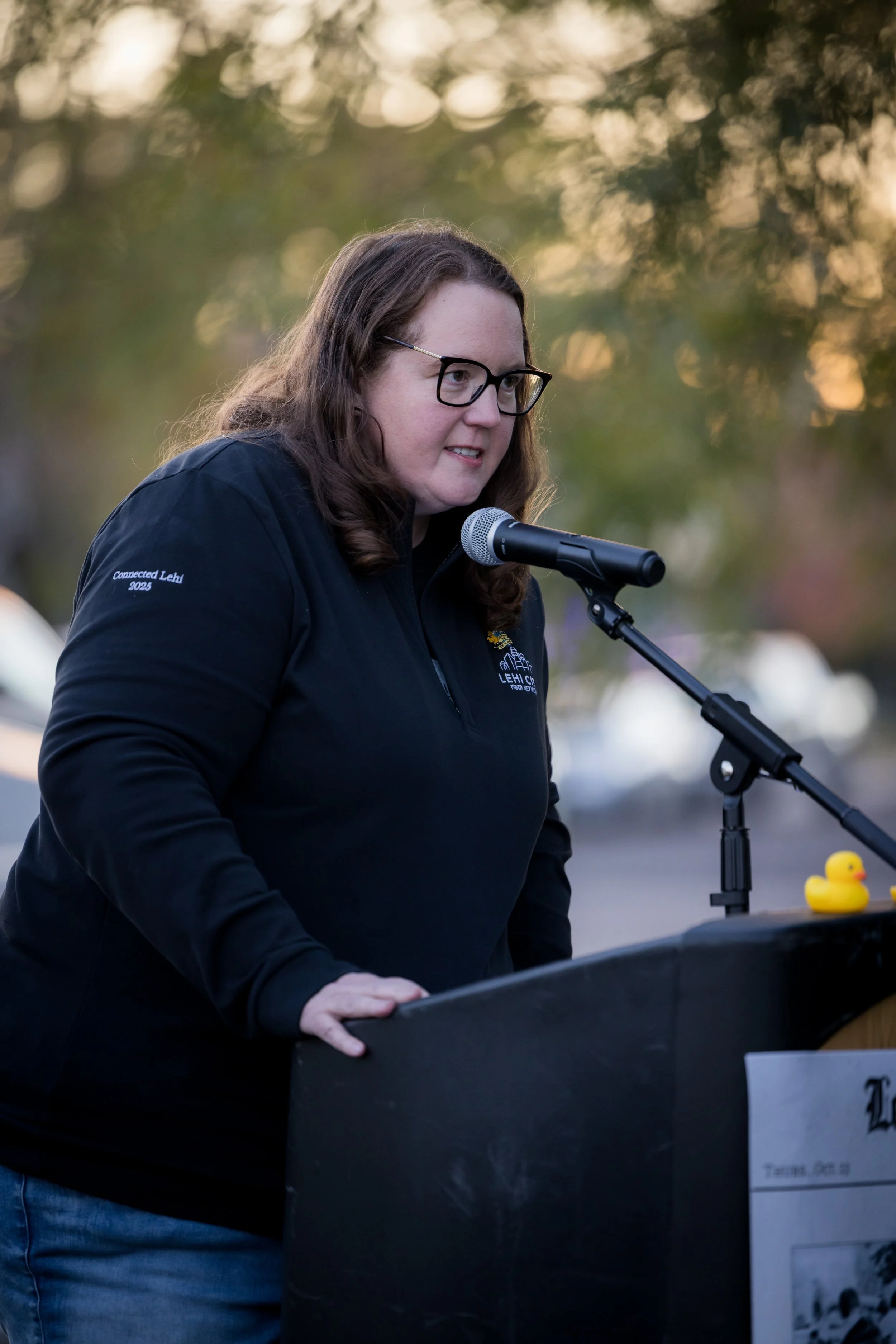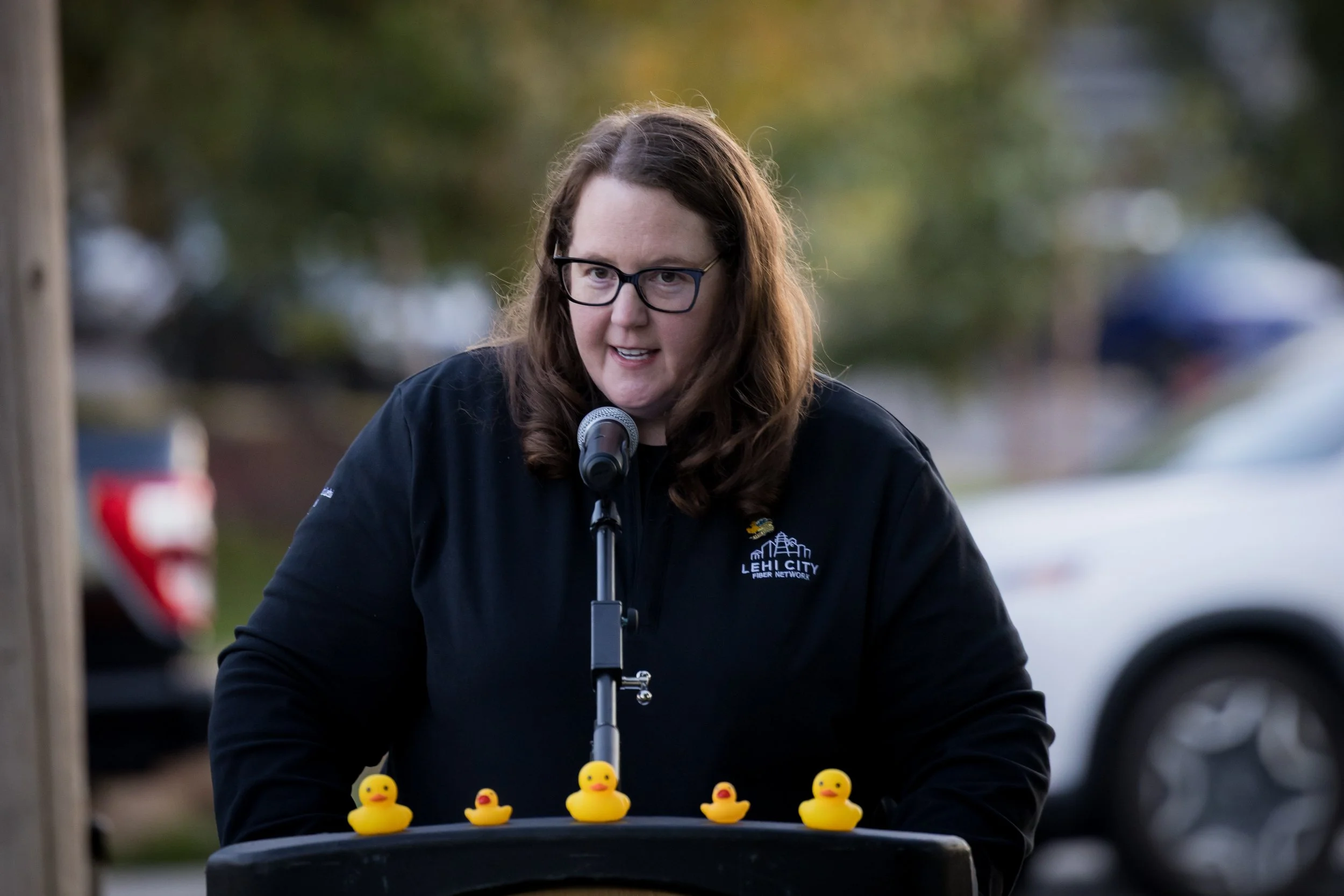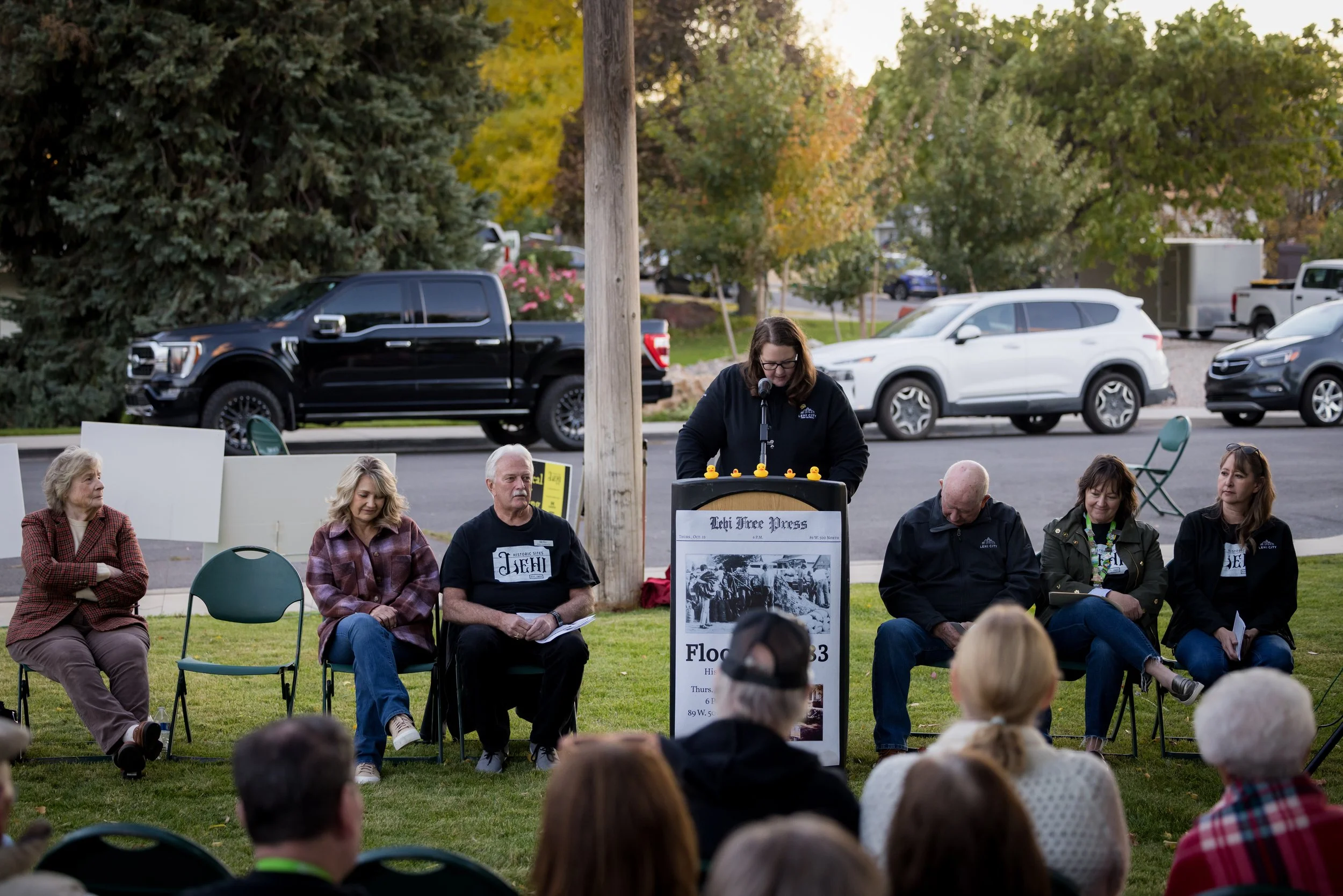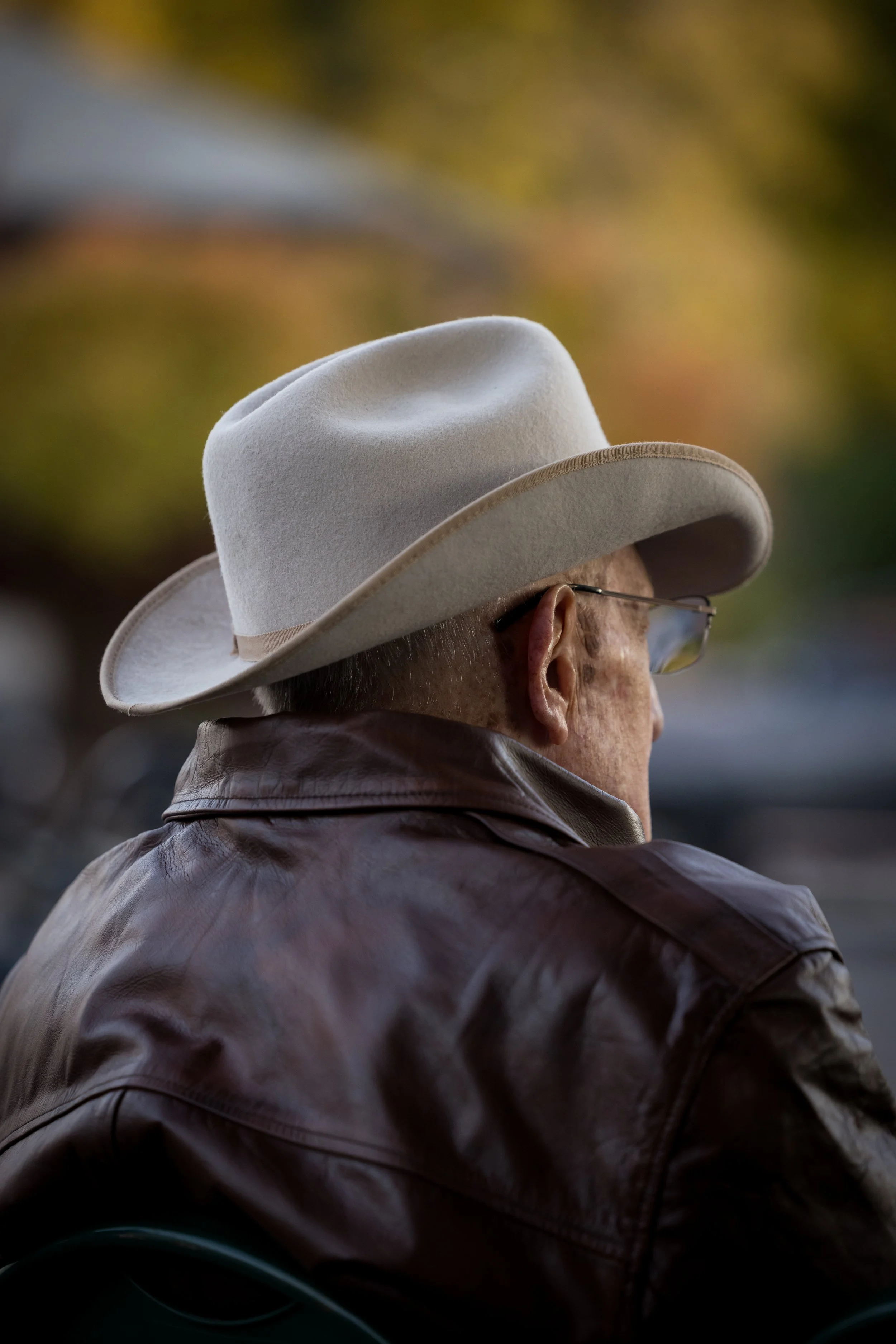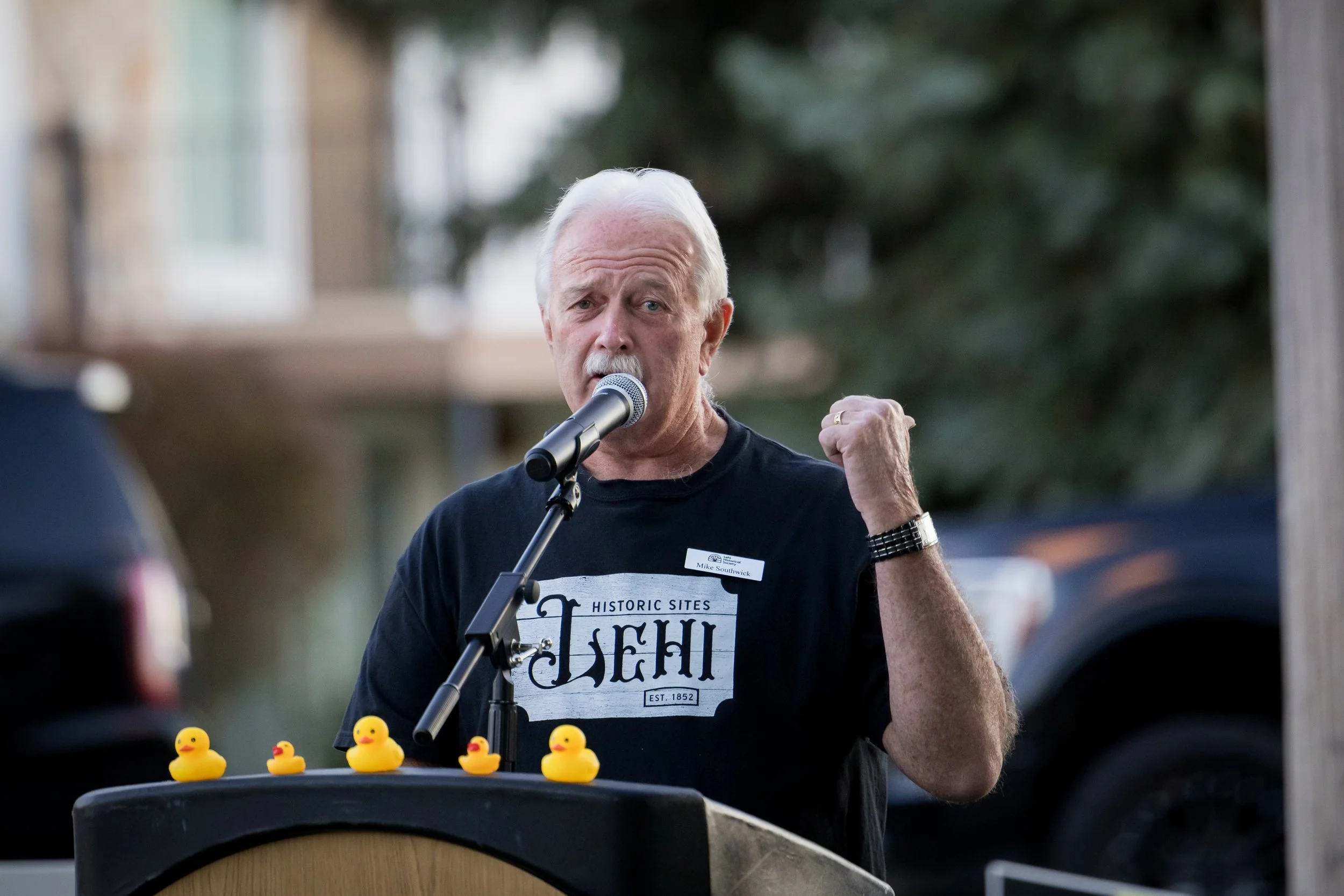
Flood of 1983
Spring of 1983
In 1983, early and unprecedented spring runoff wreaked havoc on Lehi.
“I used to like to take my binoculars to Alpine and look at the mountains,” said Gary Lewis, the city recorder and financial officer for Lehi at the time. “It was the only time in my life I could see waterfalls all over the mountain.”
A combination of record snowfall, saturated grounds, warm rains and temperatures in the 90s over Memorial Day weekend created the perfect storm.
In anticipation of what seemed the inevitable, “every waste ditch in Lehi was filled to the brim to keep the water moving,” said Russ Felt, bishop of the 13th Ward of The Church of Jesus Christ of Latter-day Saints at the time. “There was an enormous effort to keep the water where it belonged.”
The waters that run off the mountains above Alpine flow through Highland and into Lehi by way of Dry Creek in north Lehi, which then runs under State Street and into the culvert at Lehi Elementary. That culvert was always an issue, said Lewis, as it wasn’t big enough to accommodate excessive amounts of water. Therefore, the water just flowed over it, flooding the school and everything in its way.
Jim Smith, Lehi’s emergency coordinator at the time, and Lewis coordinated the city’s efforts. “It was a tough situation,” said Lewis. “We had never been through anything like that. We were still a small city.”
On Thurs., May 19, the call was issued for people to fill and place sandbags. “The wards played a big role,” said Felt. “The city supplied the supplies, but the wards enlisted the help.”
Over the course of the crisis, “hundreds of people turned out,” said Lewis, “literally hundreds.” The city brought dirt in from the sandpit to the Lehi Round-Up Rodeo Grounds along with other locations and then volunteers bagged and delivered it. “Everyone—men, women, teenagers and hundreds not even from here—came.”
Lehi native Lee Anderson said, “I remember one Sunday after taking the sacrament, our bishop told everyone to go home and change clothes and meet at the rodeo grounds to fill sandbags.”
Members of the LDS 10th Ward were especially concerned about the conditions as its boundaries included the waste ditch as well as Dry Creek from Lehi Elementary to West Main Street. Julian Mercer, head of the Emergency Preparedness Committee for the 10th Ward, wrote, “None of us had a clue about sandbagging. We weren’t sure what a sandbag looked like, how big it was or how full it should be.”
They soon learned that a filled plastic grain sack could easily weigh over 100 lbs., requiring more than one person to lift. A tightly packed 50-pound sand bag wasn’t malleable, but a loosely filled 40-pound bag was just right. One person could lift them, and they could be worked into any shape needed.
Just getting their hands on enough sandbags was a challenge as they were expensive, and the LDS wards and stakes were hesitant to buy thousands. Eventually the city provided the bags. But until then, Mercer wrote, “The purchase of sandbags by the individuals presented our first major problem, because those people wanted to use the bags for their own homes … the committee soon realized this could not be an individual effort … we must work together to keep the water in the ditch, thus protecting everyone. The beehive concept soon came to fruition. The battle could not be fought from house to house, this would be an impossible task.”
On May 19, the community filled nearly 1,500 sandbags. Most were placed at the old Vess Evans home, located at approximately 200 North and 200 West.
“I spent whole nights with my son walking the creek to see where it needed to be shored up,” said Felt. “The town really responded. Everyone came together to help take care of the water.”
It wasn’t until the early Sunday morning hours of May 29, that the high and rising waters did what everyone was dreading. The mountain had spent the day quenching in the sun. It just took until the middle of the night for the waters to reach Lehi.
With or without permission from the city, Mercer said, residents worked together that night to take out bridges that they could see were going to cause major bottlenecks. The bridge at 400 North and 200 West came out as well as a foot bridge, a bridge at 500 West and 500 North, and the bridge just west of the Maverik on Main Street. In total, Lewis said six or seven bridges came out during the crisis.
Fortunately, the sandbags that had been placed helped to protect the homes and guide the waters, turning streets into rivers and reducing residential damage.
According to Mercer, because the intersection at 500 North and 100 West was low-lying and near the creek, it was a focus of a lot of sandbagging. Jen Adamson Hall, whose childhood home was at the intersection, recalled that the community’s efforts helped reduce the damage. Thankfully, she noted, the cinderblock walls of her home acted as a filter so that the water that did get in was clean.
While the streets of Lehi were being flooded, Utah Lake was also working toward its highest levels ever recorded. “Everyone was worried about the houses out there too,” said Felt.
Lehi native Judy Hansen recalled, “I remember driving on the back roads down by the lake, and there was water on both sides of the road. The little white house on the Saratoga Road bend was an island sitting in the water.”
Felt remembered checking on Mrs. Brown, a widower whose home sat southwest of town in an area that could have easily been compromised. When he and his son arrived to help, they discovered a young man had already shored up her home with sandbags. “He had done an exceptional thing,” said Felt. “That’s good stuff.”
On Sun., May 29, nearly 7,000 sandbags were filled with help from many outside the community. Mercer said, “All through the siege, we were fortunate to have so much help from people outside Lehi.”
In the end, there were homes and property damaged, but no homes were lost.
Lehi was not the only community affected by the moisture that year. The mountain town of Thistle in Spanish Fork Canyon was swallowed up in a landslide and downtown Salt Lake City’s streets were turned into rivers much like Lehi’s.
“It was quite a time,” said Felt. “It really drew people together.”
Although the crisis in Lehi only lasted 10-12 days, Lewis said the impact was felt for months if not years because so many bridges had to be rebuilt.
Mercer wrote, “Through the entire experience, we learned many things. Perhaps the most important lesson we learned was the willingness of so many people to come to the aid of others in a time of crisis. We also learned the importance of preparation and being organized and working together. I don’t recall any anger, fighting or disagreements as everyone seemed to realize the necessity of pulling together and working as a team. Nobody had all the answers, but it seemed the right answers came.”
Bangerter, Lara M. “Spring runoff creates perfect storm and floods in 1983: Lehi came together to keep water where it belonged,” Lehi Free Press, 22 Mar. 2018, p. A6.
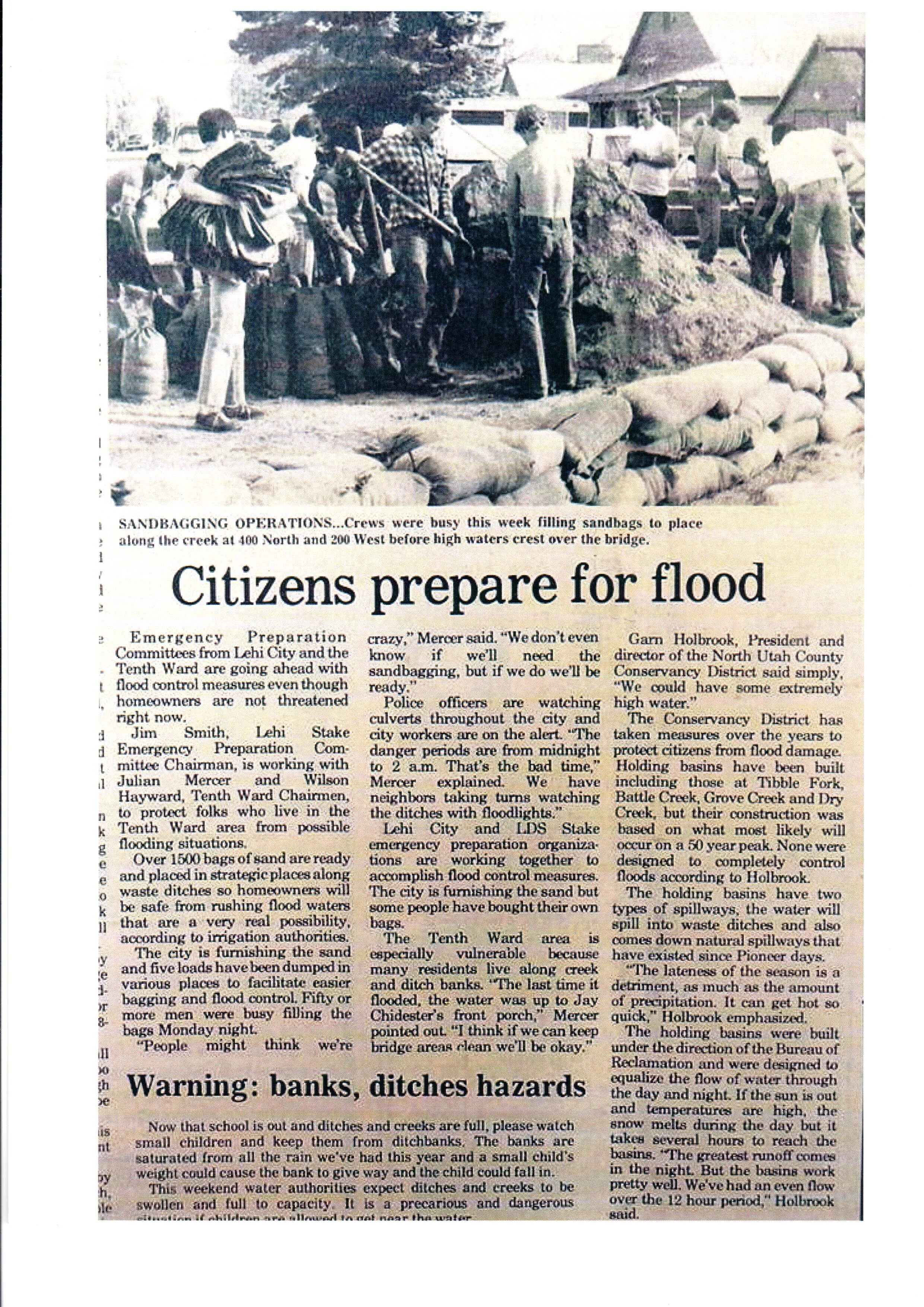



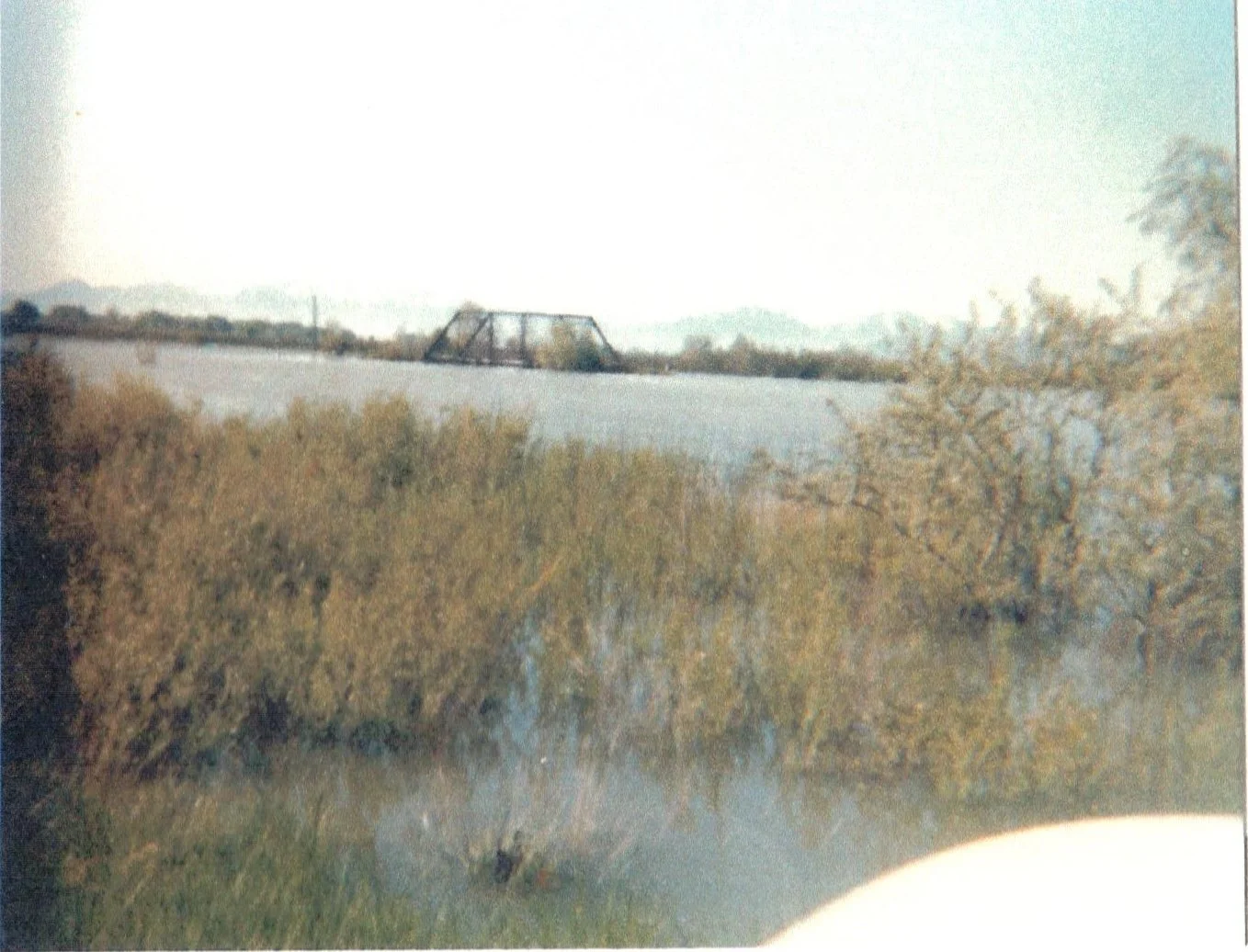

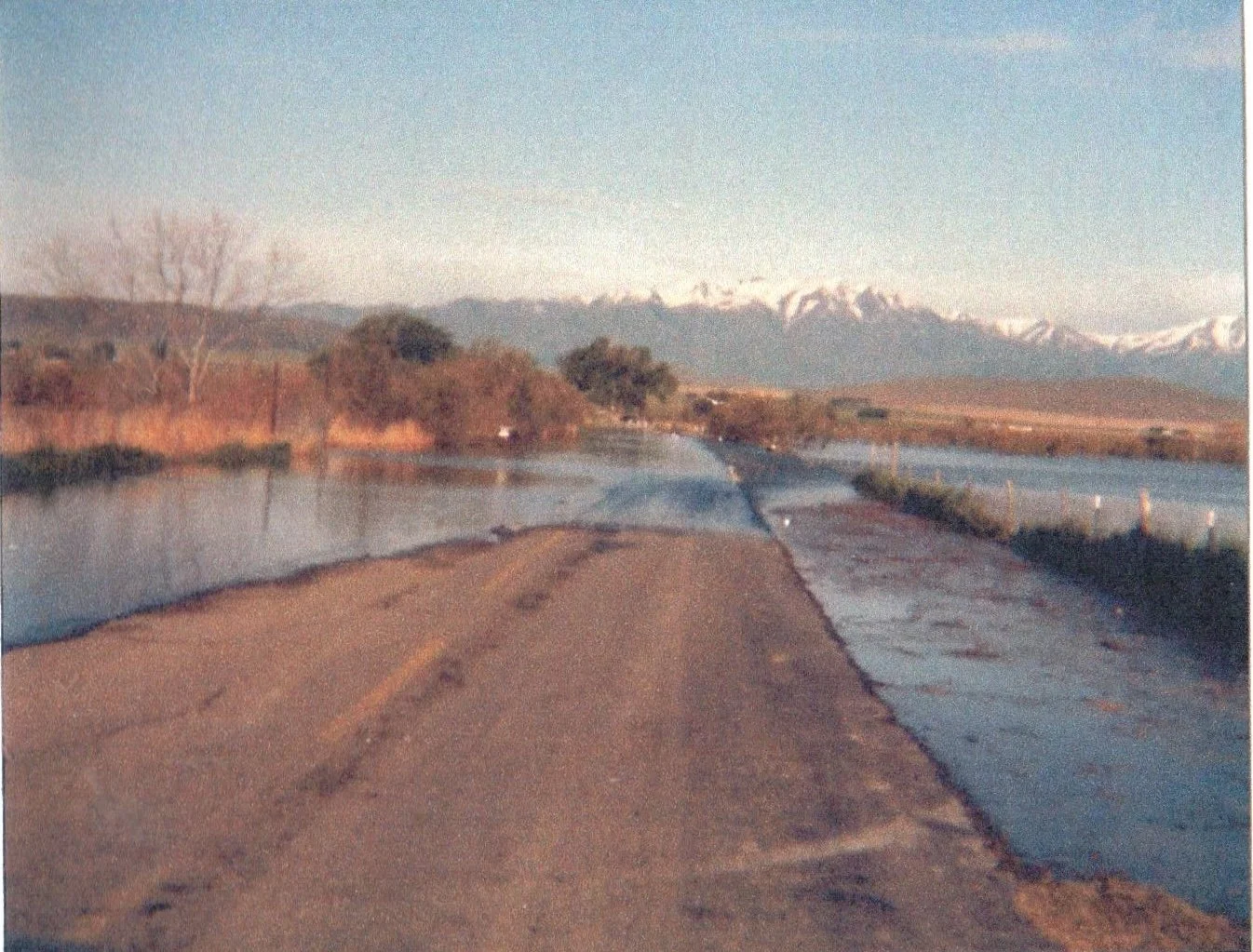
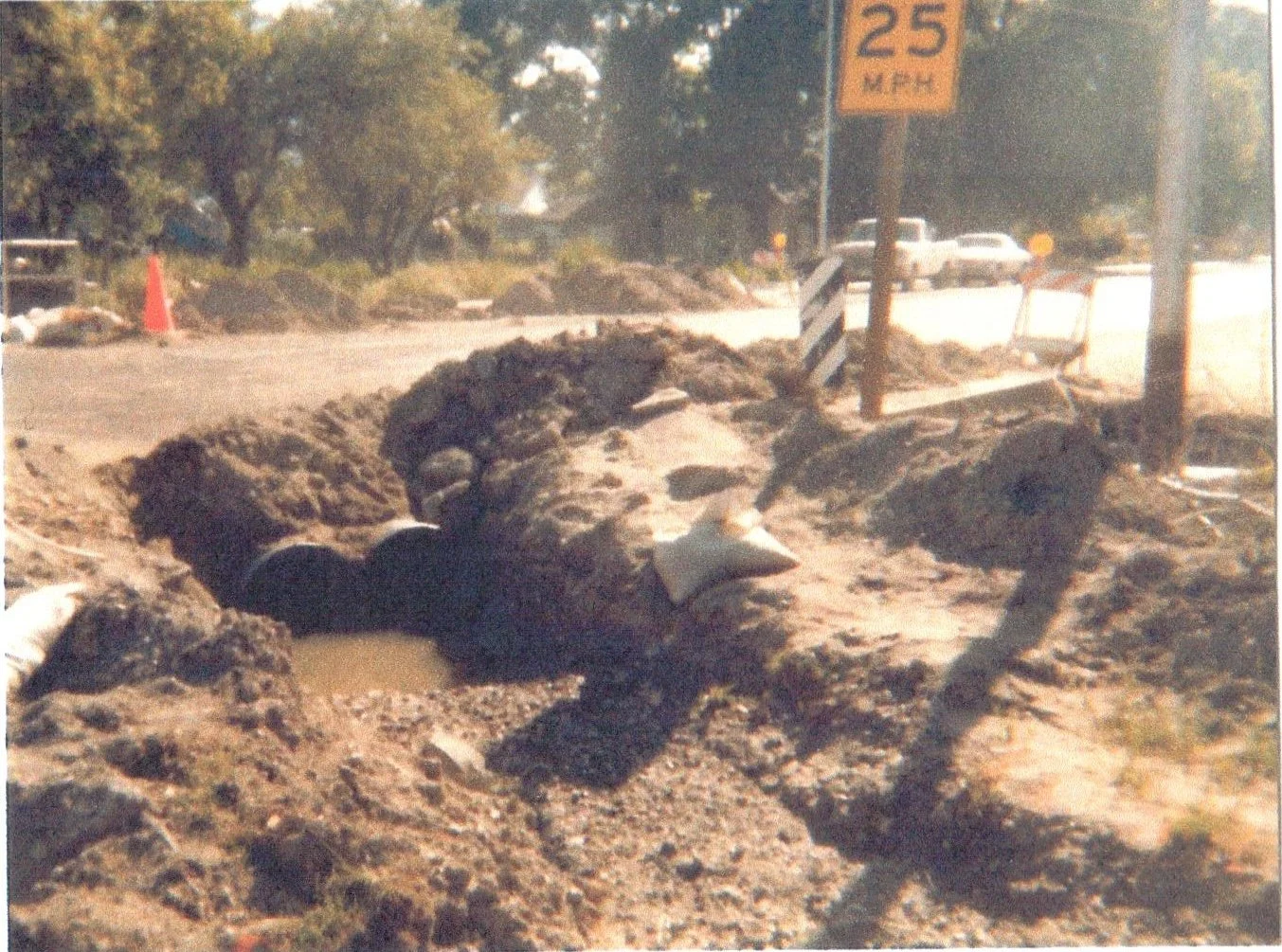



Flood of 1983 Historical Marker Unveiling
Oct. 23, 2025
The Lehi Historical Society is pleased to invite the public to the unveiling of the Flood of 1983 historical marker on Thurs., Oct. 23, at 6 p.m., at 89 W. 500 North.
In the spring of 1983, warm spring temperatures unleashed a torrent of mountain runoff through the Wasatch Front and more specifically, Lehi’s Dry Creek, wreaking havoc on what was once our small town. In Lehi fashion, the community united in a remarkable display of teamwork, filling and placing sandbags, clearing debris and patrolling for breaches. Thus, many homes were saved.
This latest marker will be installed in a low-lying area that was among the hardest hit during the flood. Former Lehi City Mayor Bert Wilson, Jen Hall Lynch, whose childhood home was flooded, Donna Barnes of the Lehi Free Press and Lehi City Council member, Heather Newall, will speak at the short unveiling program. The event will be outdoors.
The marker is the 15th of 36 markers to be installed through the Lehi Historical Marker Program.
Photos of unveiling program will be posted soon.
Collector pins celebrate Lehi’s history and support the Lehi Historical Society
Purchase collector marker pins to show your Lehi spirit and support for the Lehi Historical Marker Program and the Lehi Historical Society. There are currently 15 pins available.
65 W. 500 North Lehi, Utah 84043
MARKER LOCATION



